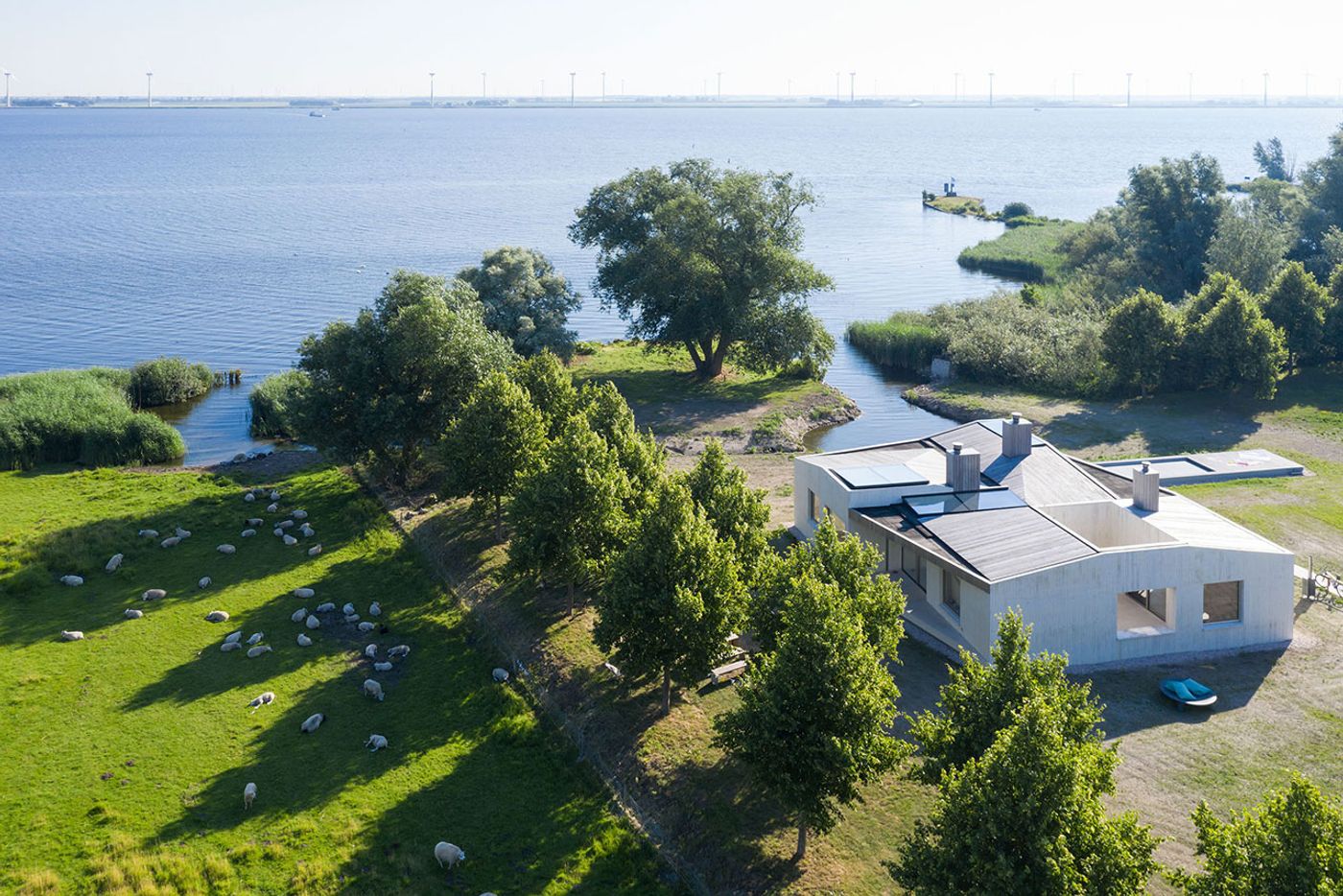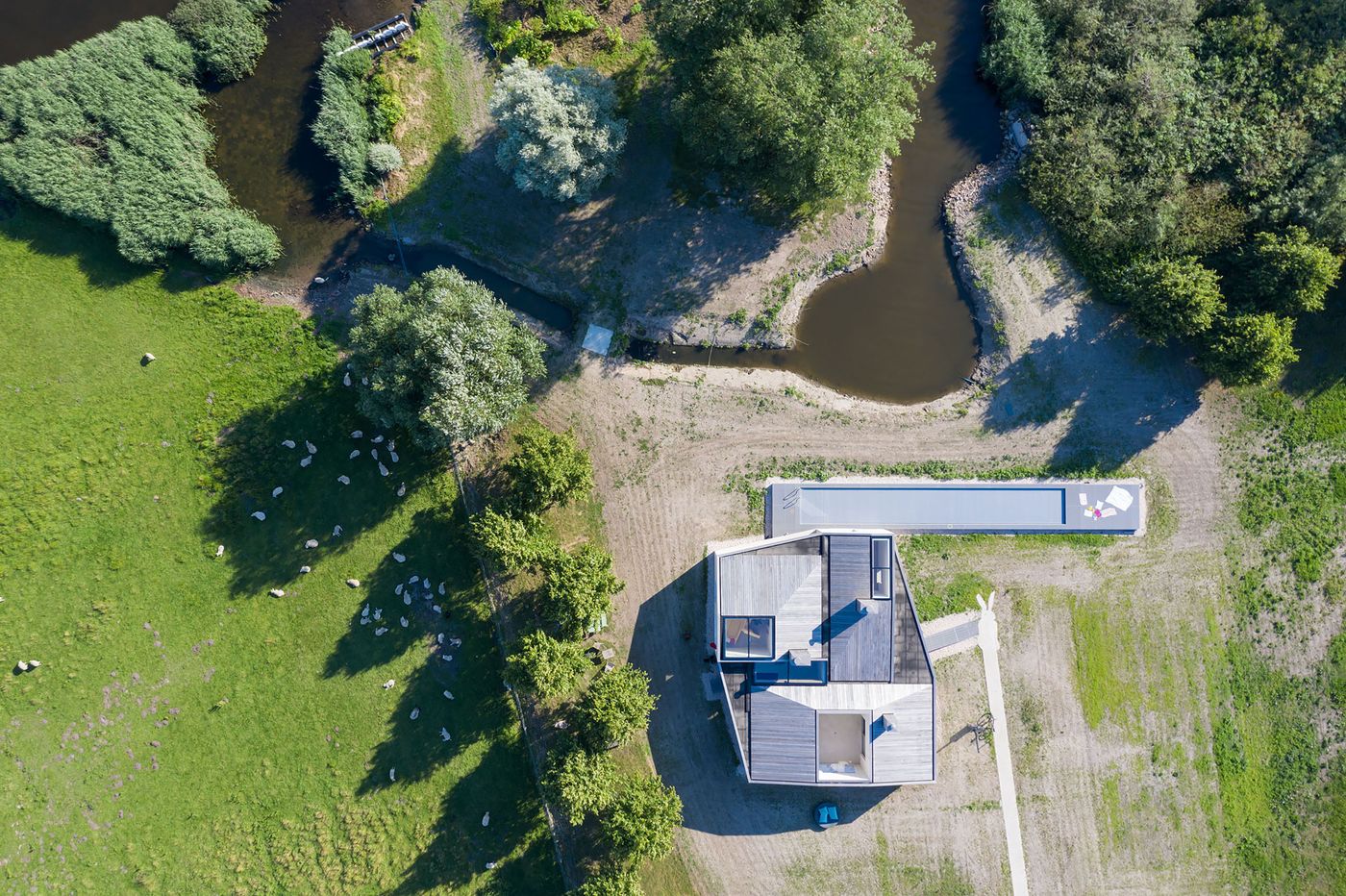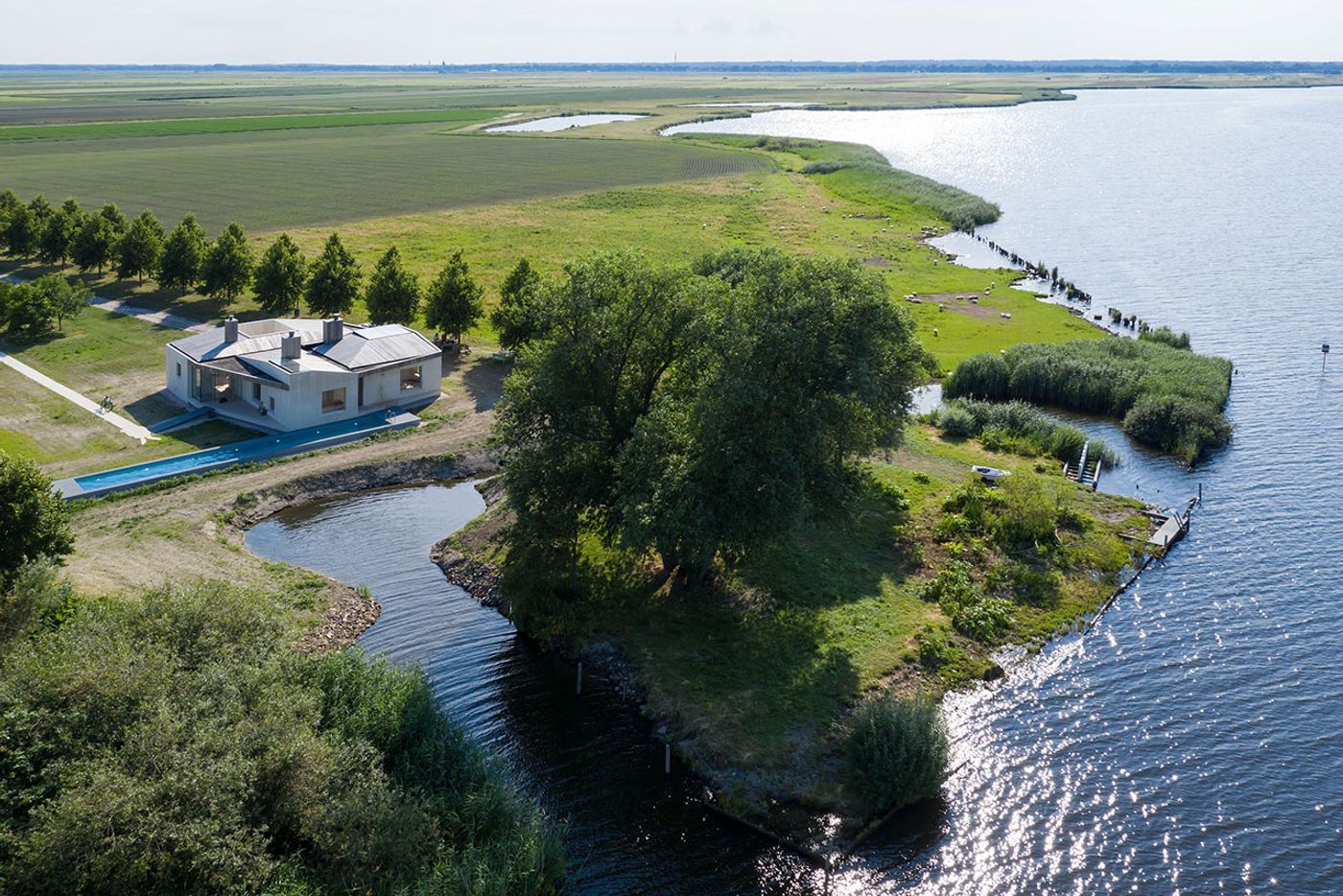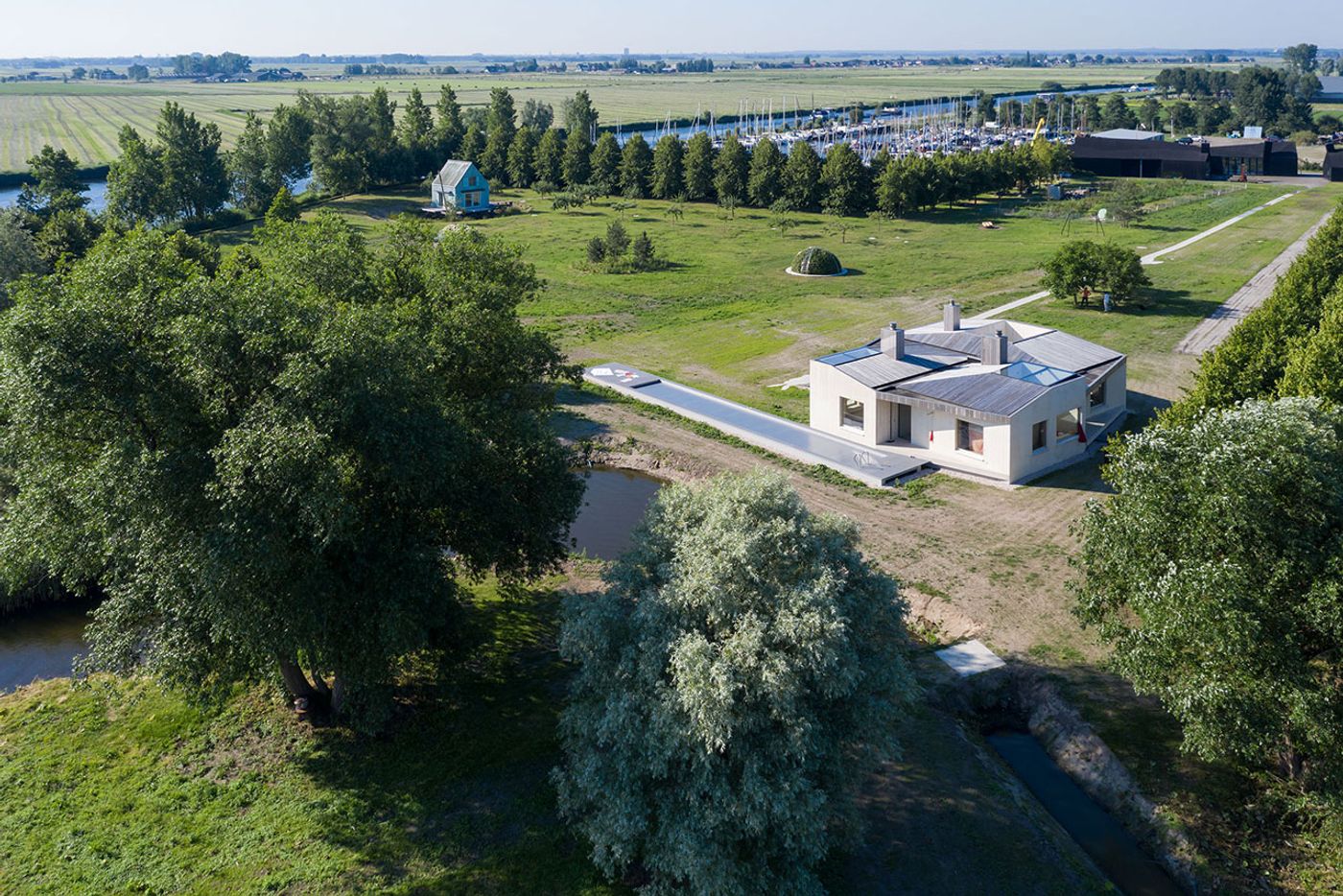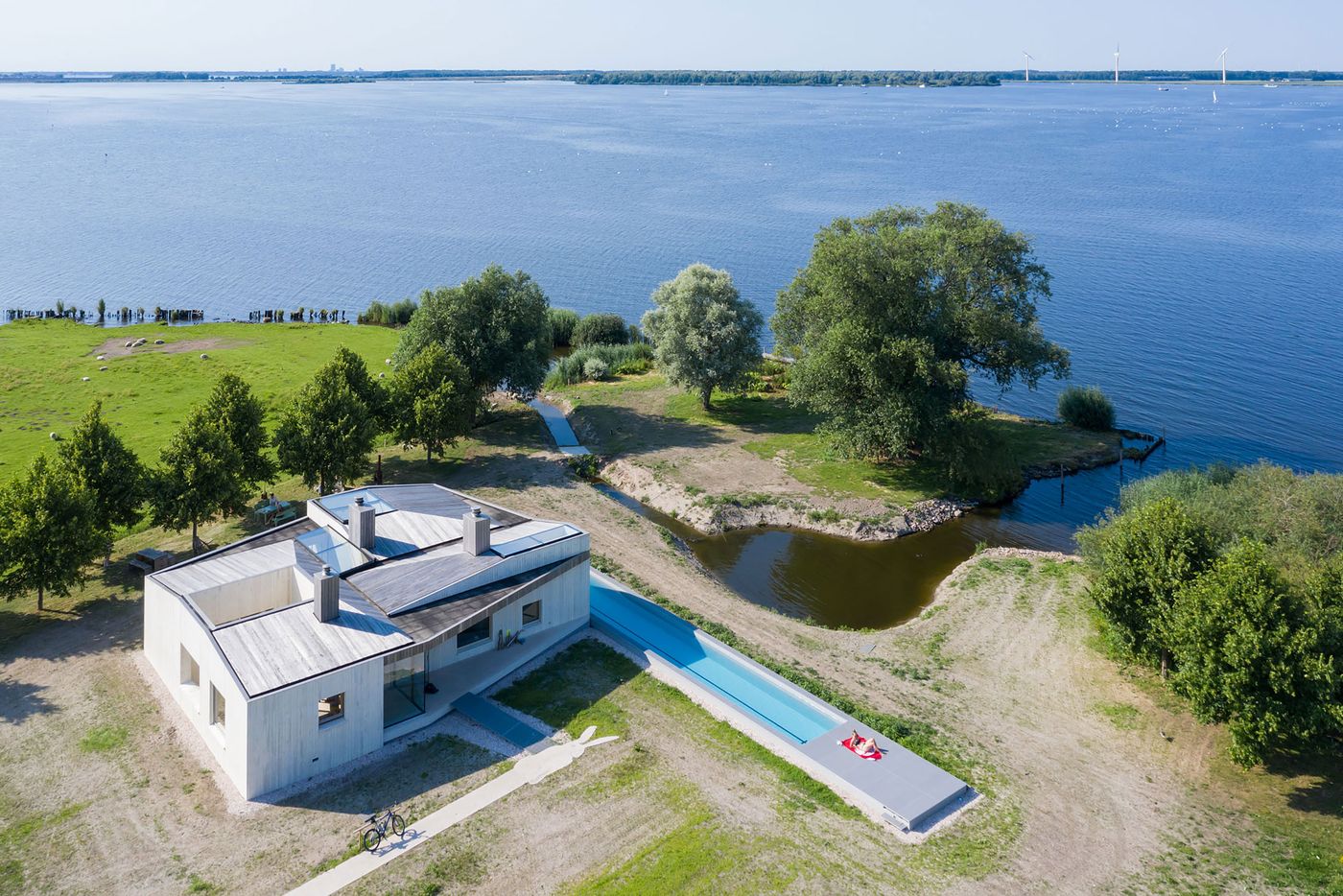
De Kort Van Schaik Design an Award-Winning Minimalist Retreat in the Dutch Countryside
Words by Eric David
Location
Eemnes, The Netherlands
De Kort Van Schaik Design an Award-Winning Minimalist Retreat in the Dutch Countryside
Words by Eric David
Eemnes, The Netherlands
Eemnes, The Netherlands
Location
Located where the River Eem flows into the Eemmeer lake on the edge of Eemnesserpolder, an expanse of open grassland teeming with birdlife in the heart of the Netherlands, this serene country retreat was designed by Rotterdam-based architectural practice De Kort Van Schaik both as a haven to experience the surrounding nature in the summer and as a shelter to withdraw to during the freezing winter months. Taking its name from the nearby marina, “House on the Raboes” is imbued with a monastic ambience, the result of a soothing palette of muted, almost monochromatic grey hues and rich textures, a painterly composition of framed views, and minimalist interiors featuring sculptural centrepieces such as the yellow epoxy bathroom ensemble by Dutch designer Sabine Marcelis. Named BNA Best Building of the Year Award 2021 in the residential living category, the house offers the opportunity to effortlessly disconnect from city life and reconnect with nature.
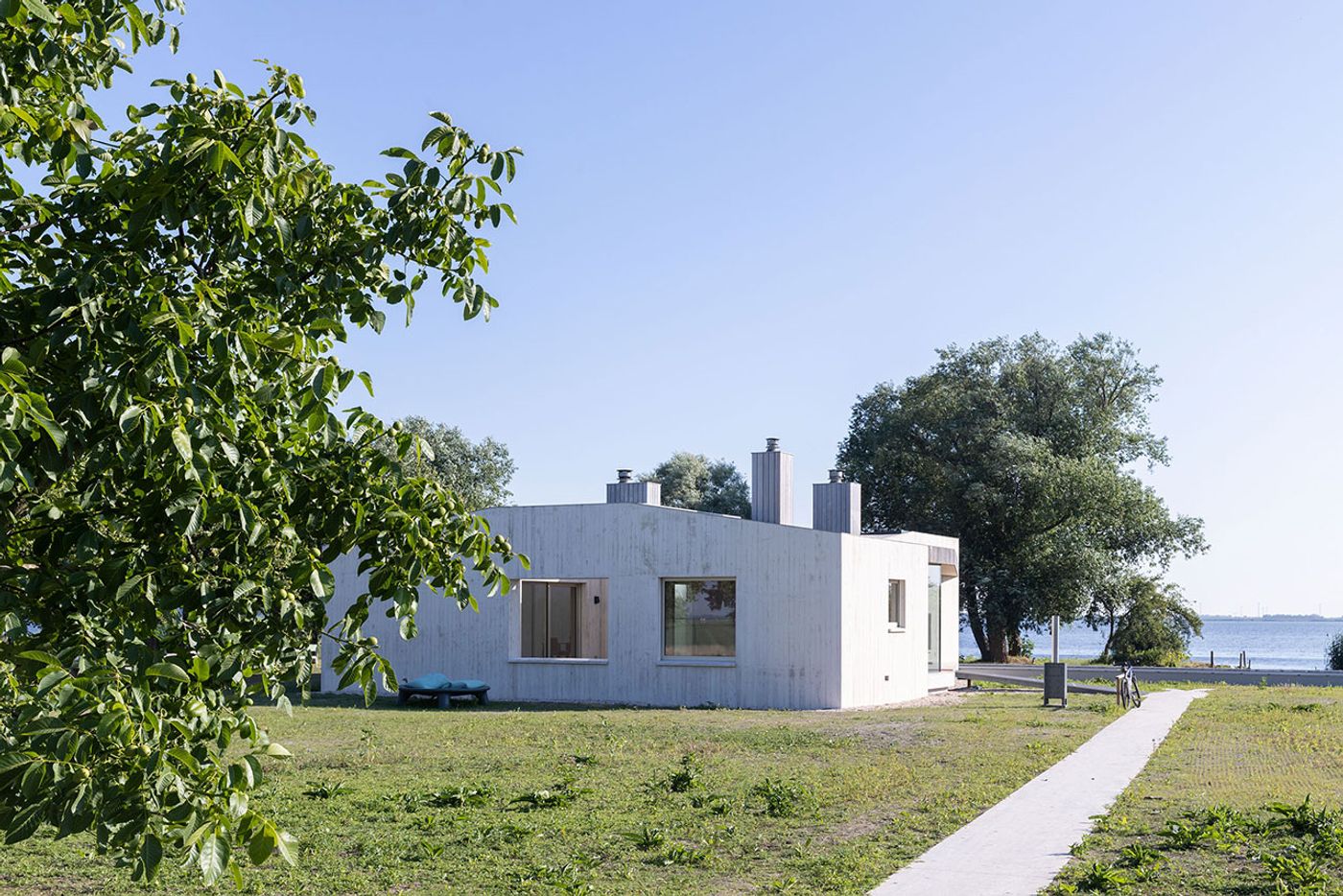
Photography by Iwan Baan.
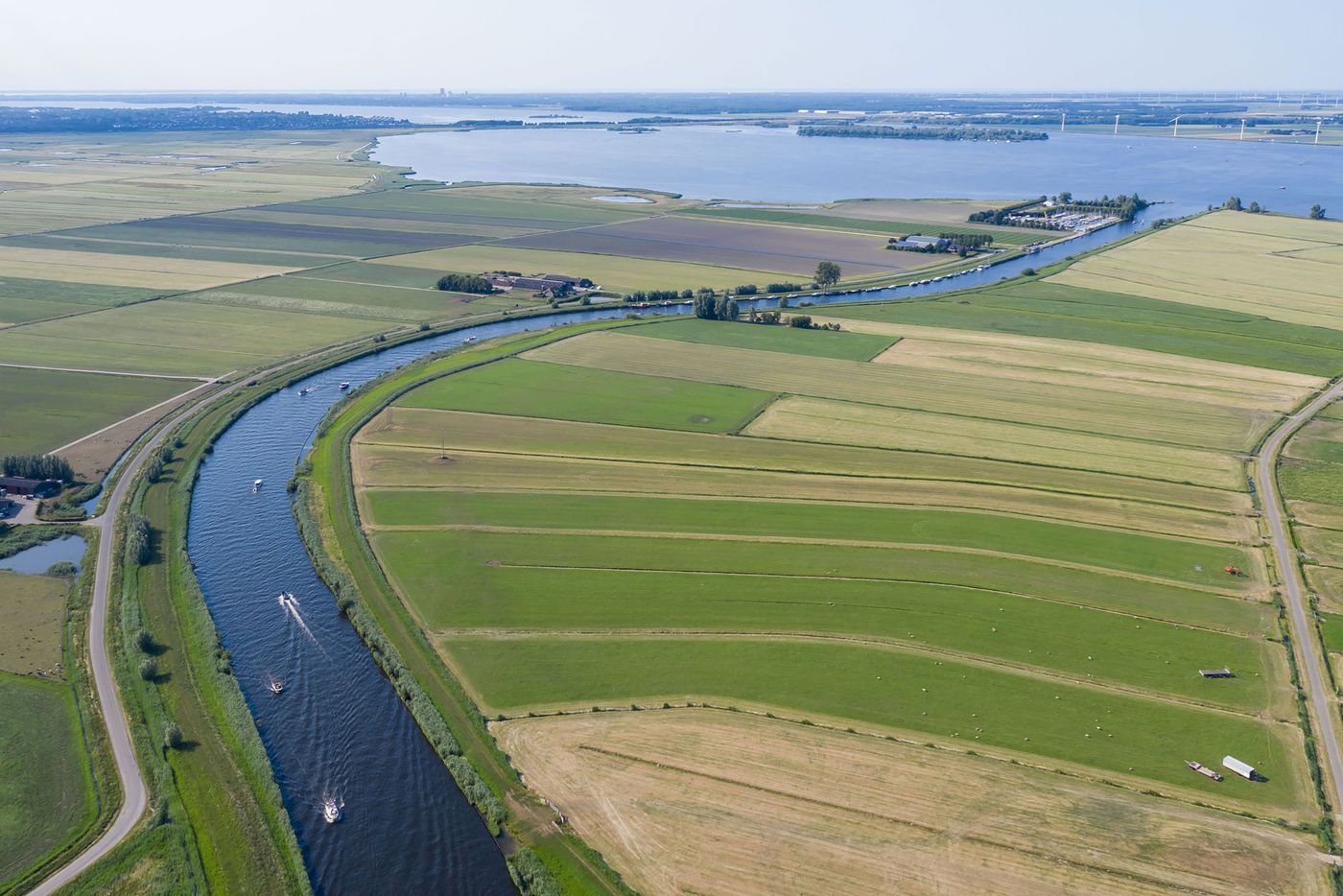
Photography by Iwan Baan.
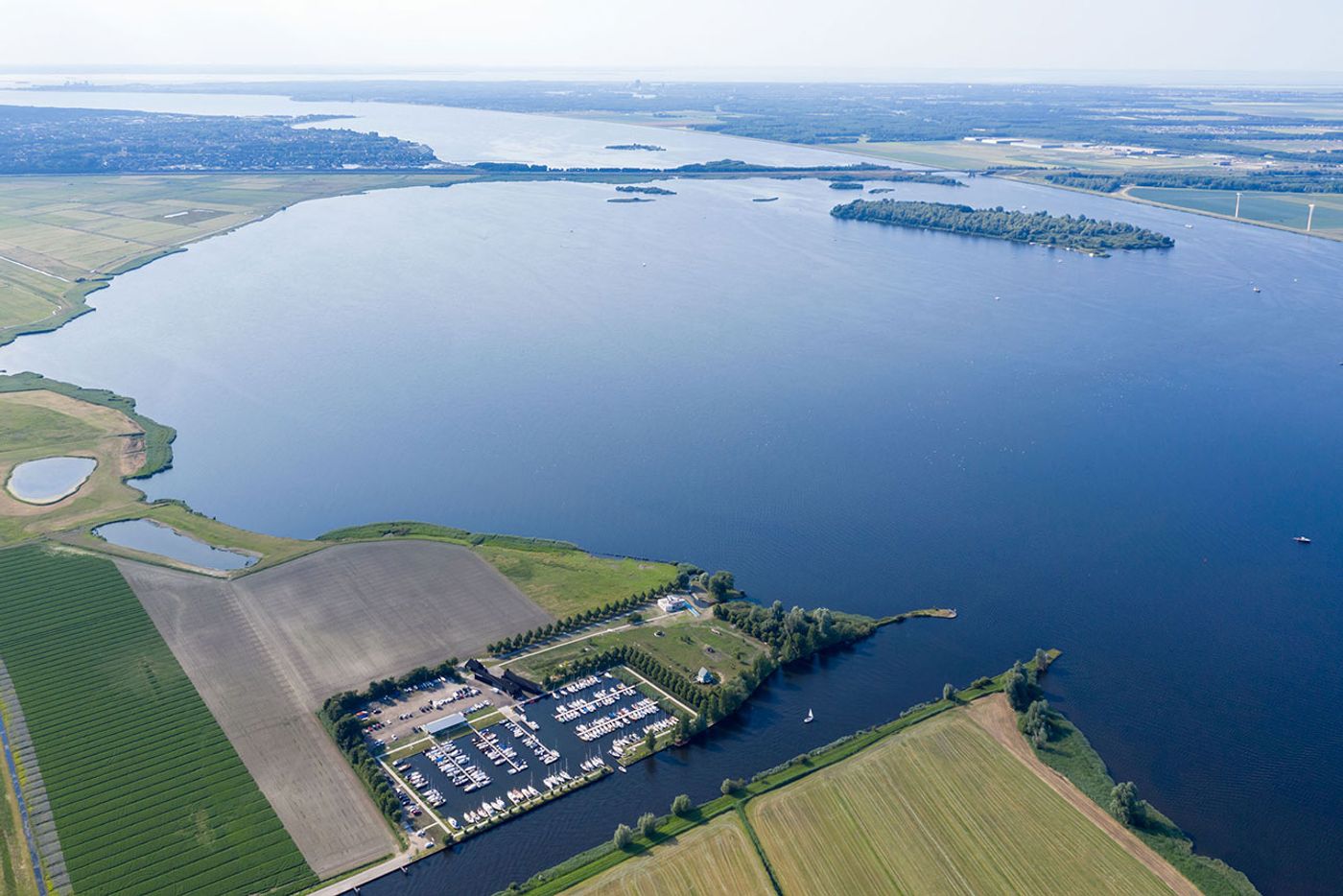
Photography by Iwan Baan.
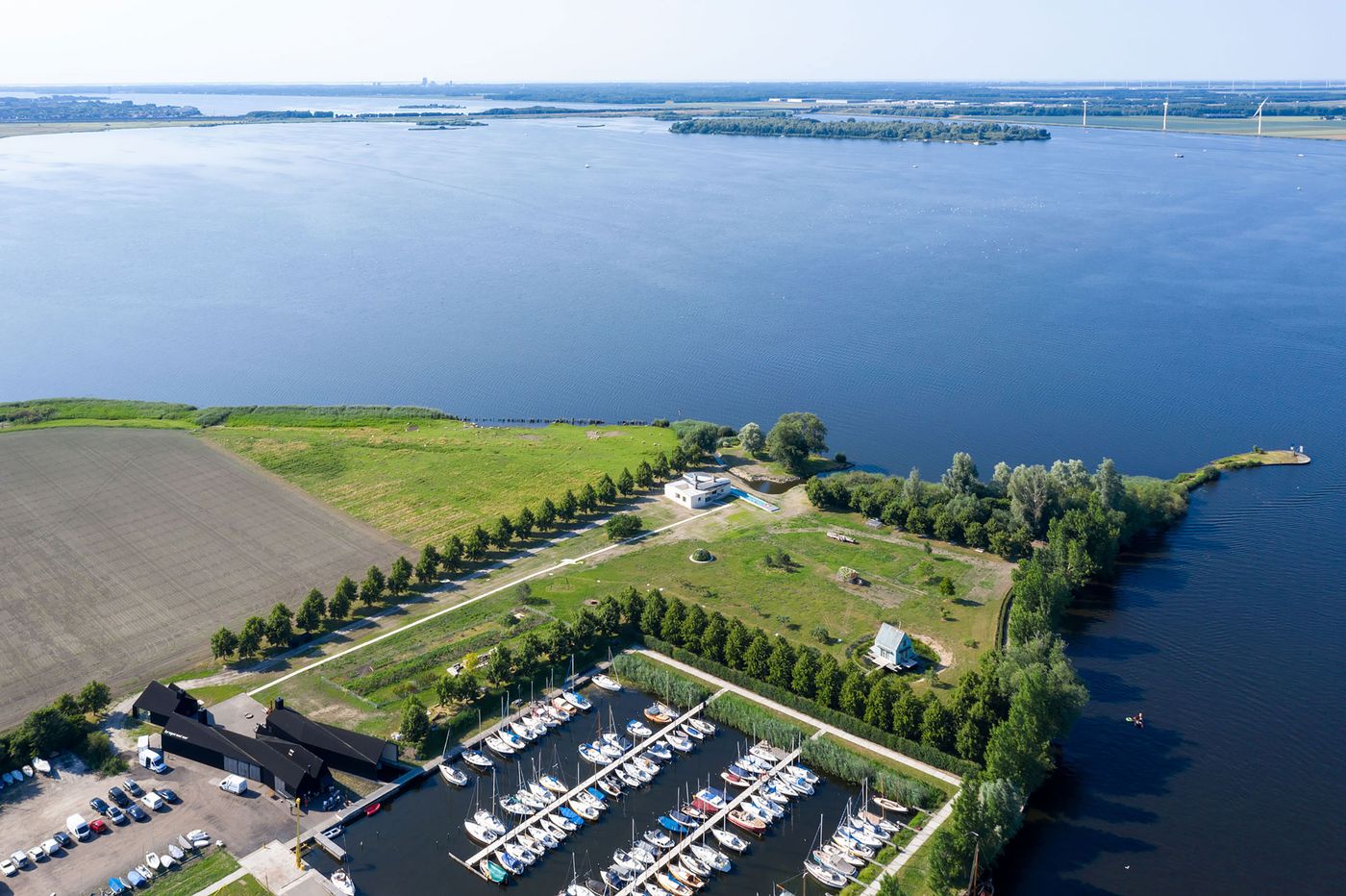
Photography by Iwan Baan.
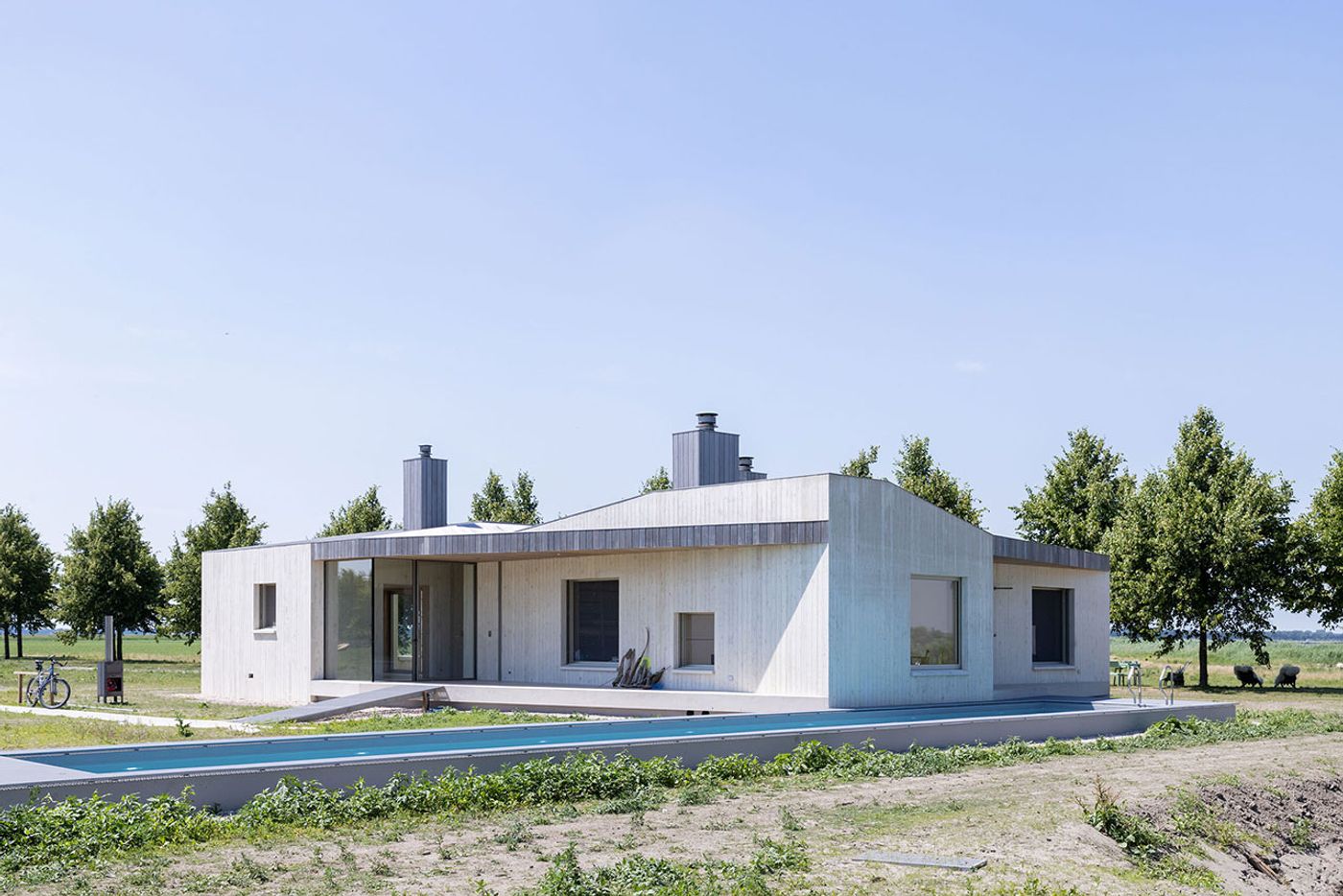
Photography by Iwan Baan.
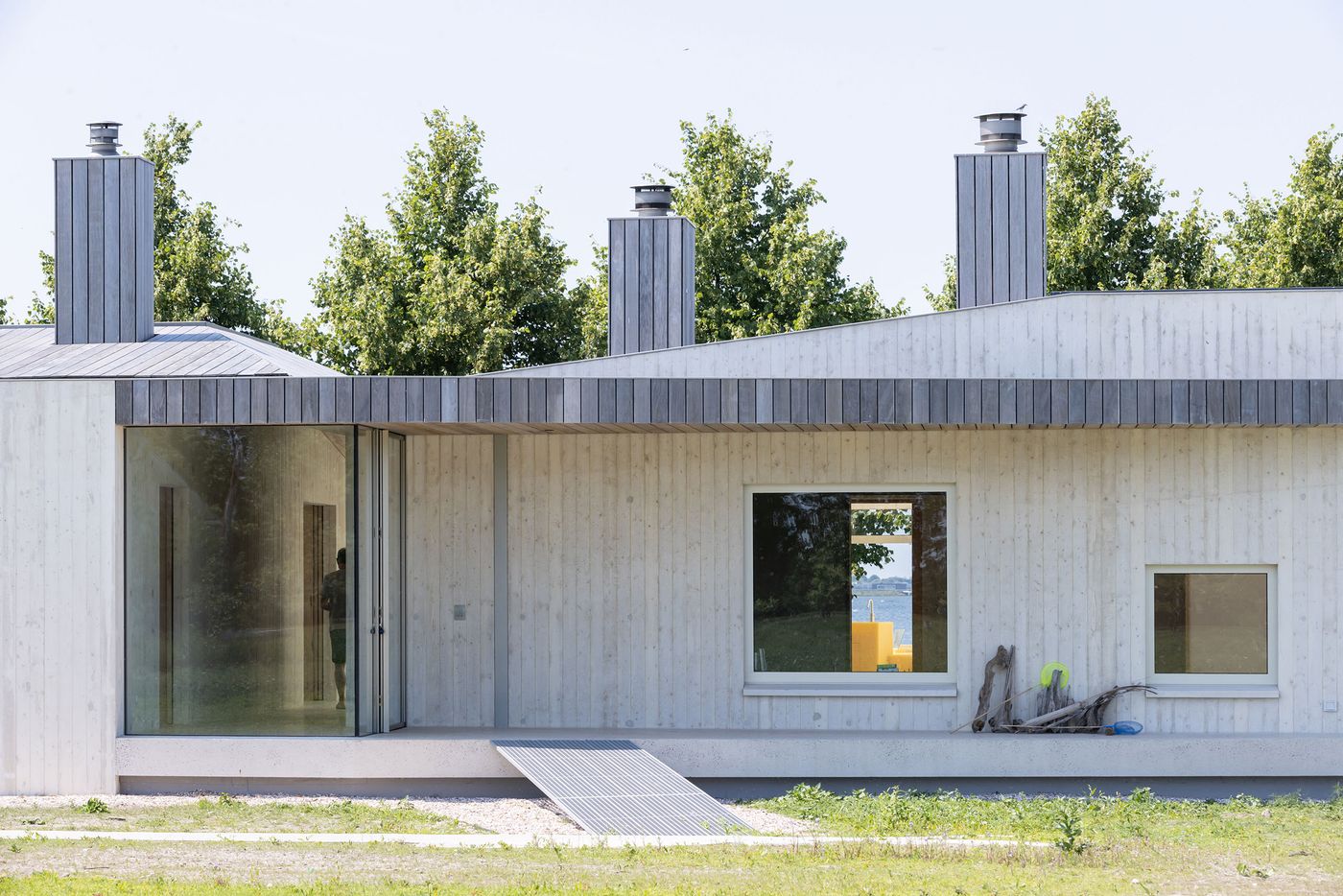
Photography by Iwan Baan.
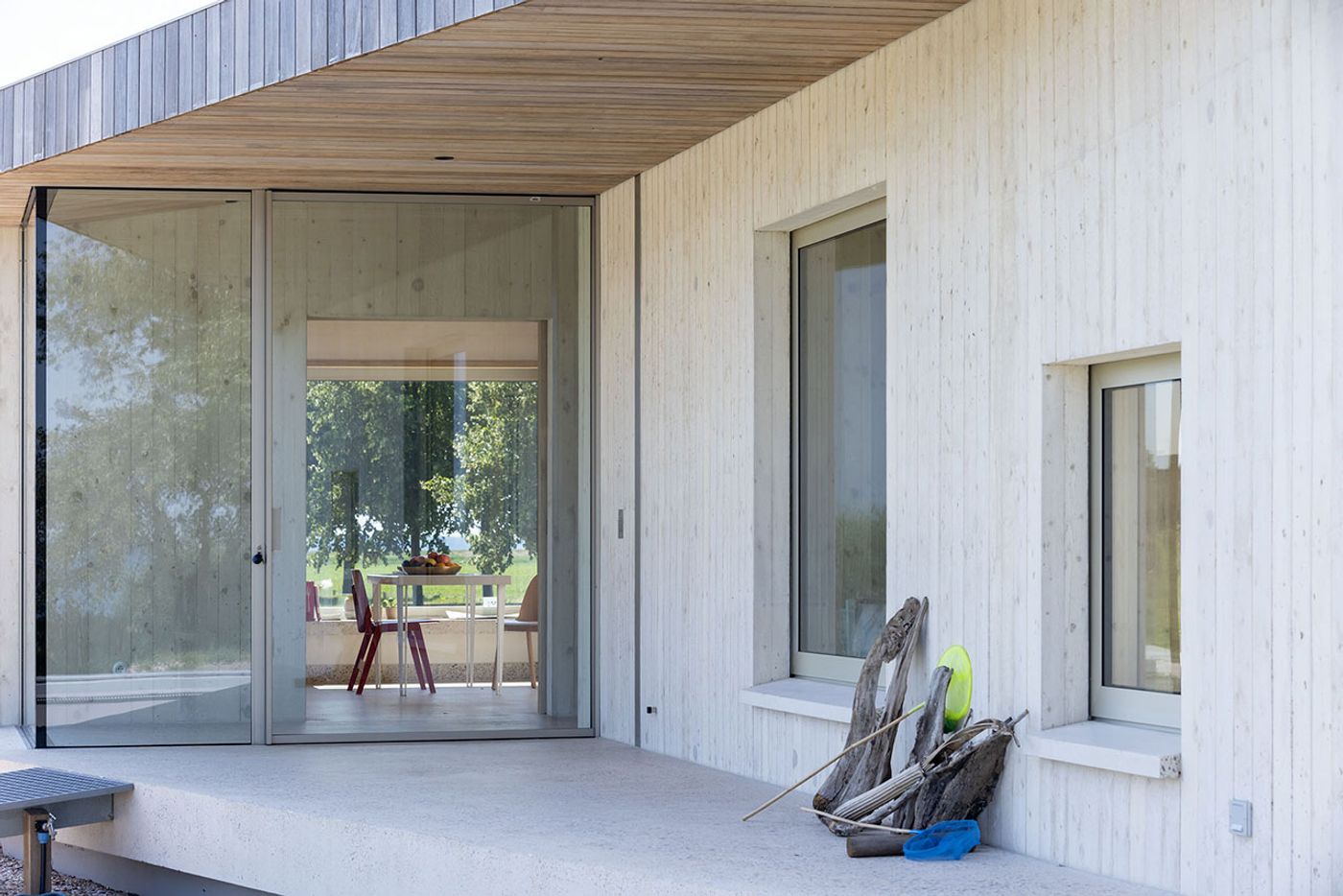
Photography by Iwan Baan.
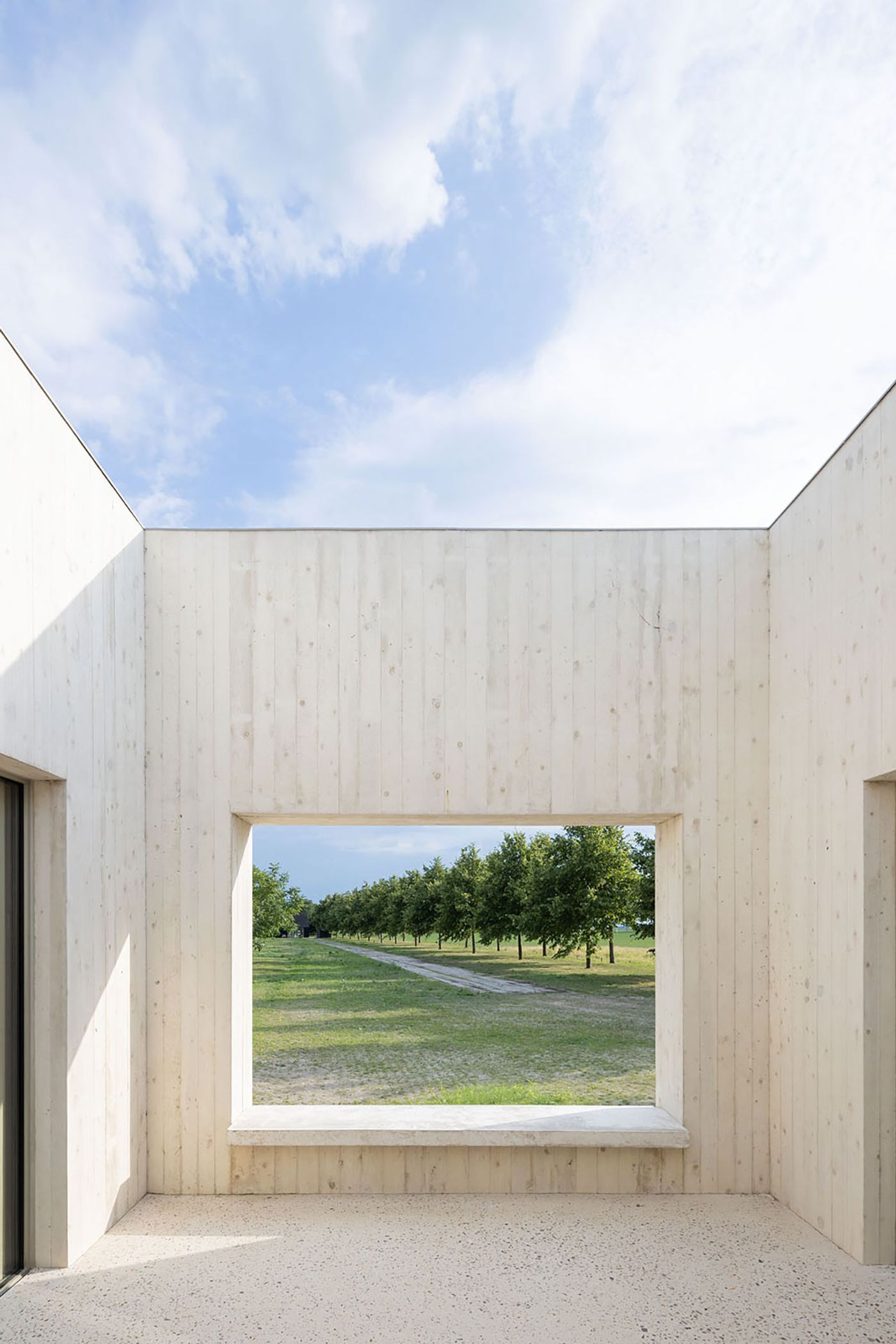
Photography by Iwan Baan.
Since the current owners acquired the once derelict marina in 1992, the site has been transformed into a modern nature and water sports centre, with the owners’ house being the final addition to the revived property. Standing at the far end of a field, the house is separated from the marina’s public areas by rows of trees and a group of long narrow black buildings that form the rear boundary. Ceremoniously reached by a long pathway, the house at first appears as a monolithic boulder. However, on closer inspection three loosely grouped concrete volumes held together by covered terraces are revealed. A T-shaped, interstitial passageway closed off by slender glazed doors connects the three volumes whilst offering views of the surrounding landscape in multiple directions.
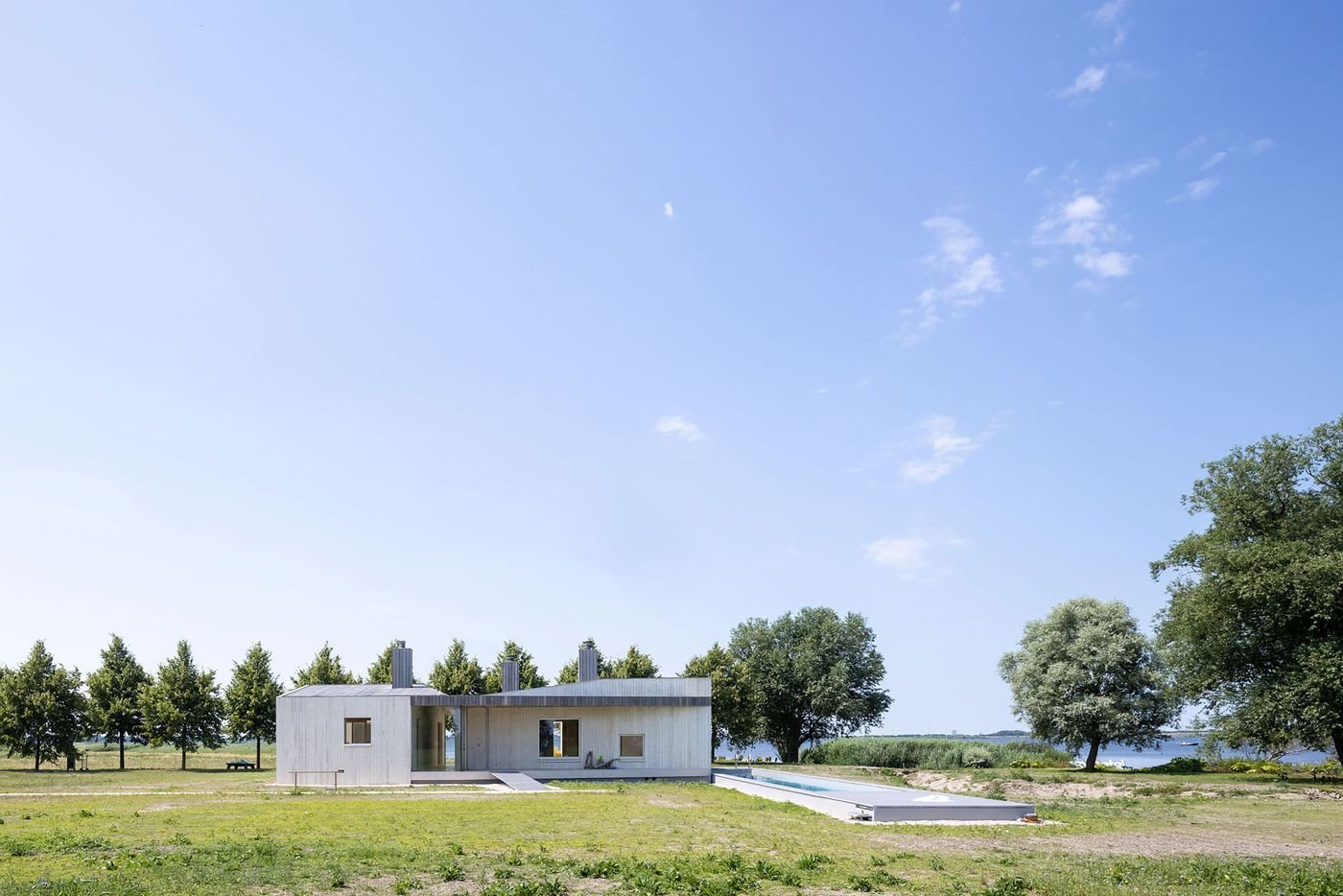
Photography by Iwan Baan.
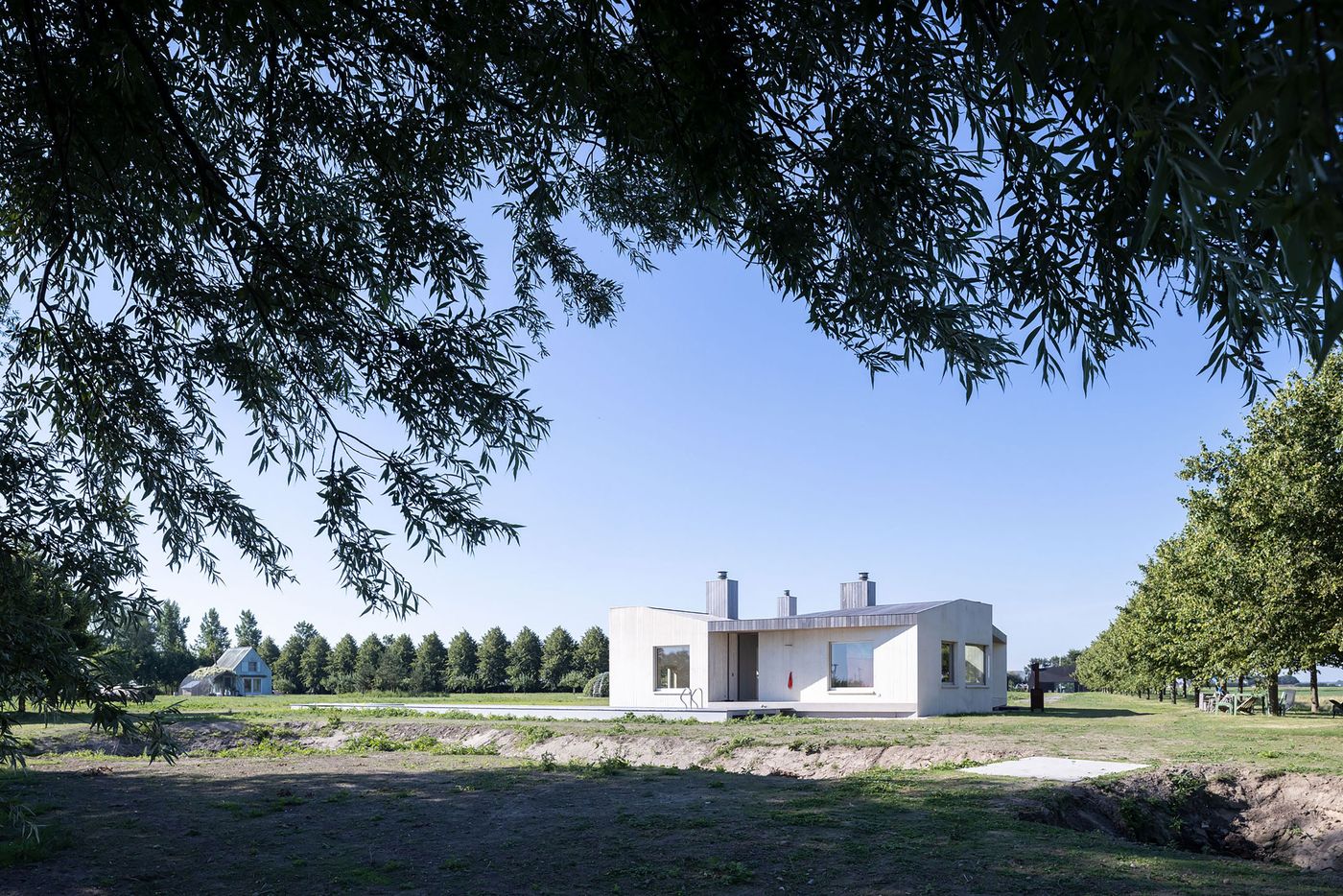
Photography by Iwan Baan.
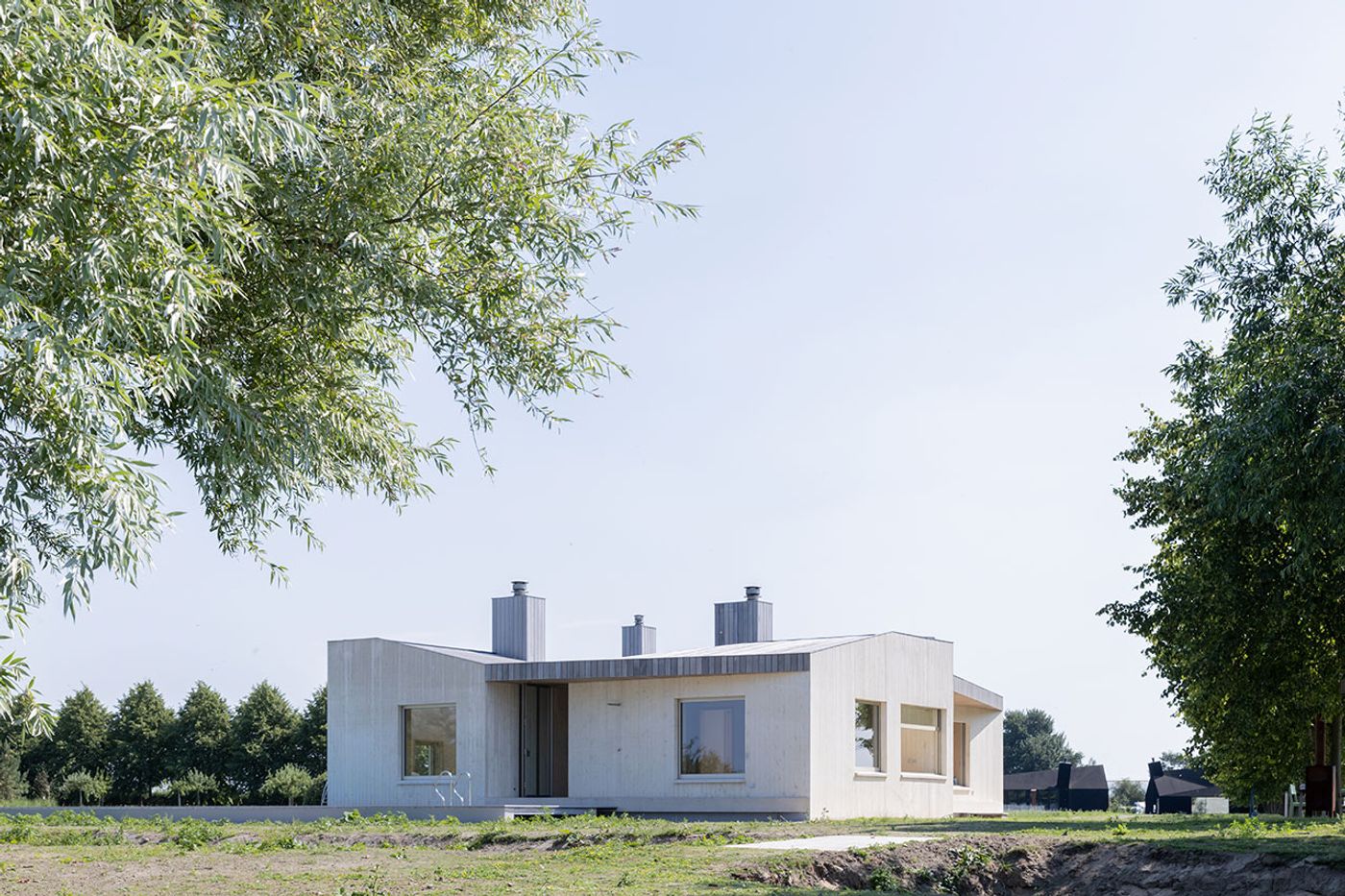
Photography by Iwan Baan.
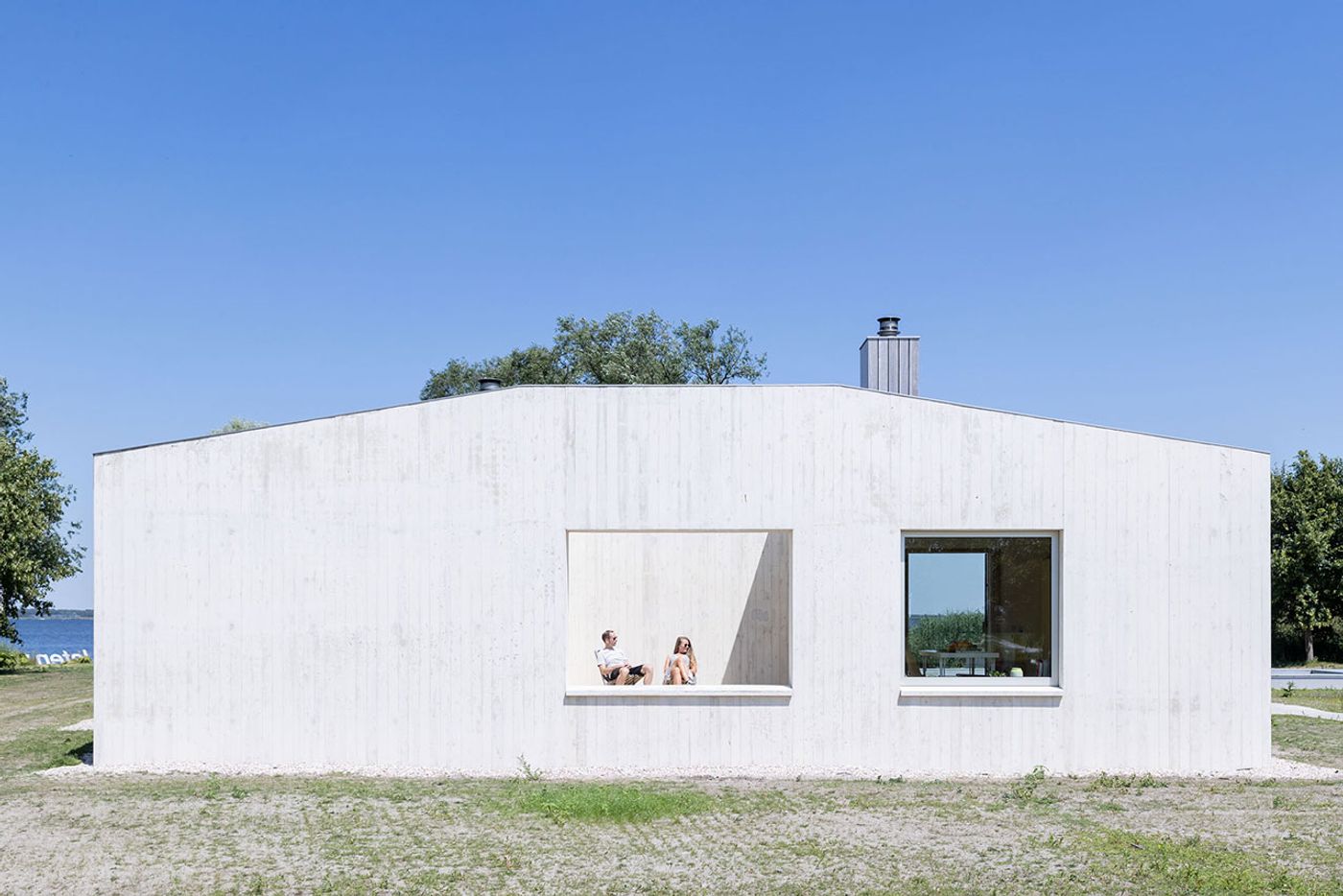
Photography by Iwan Baan.
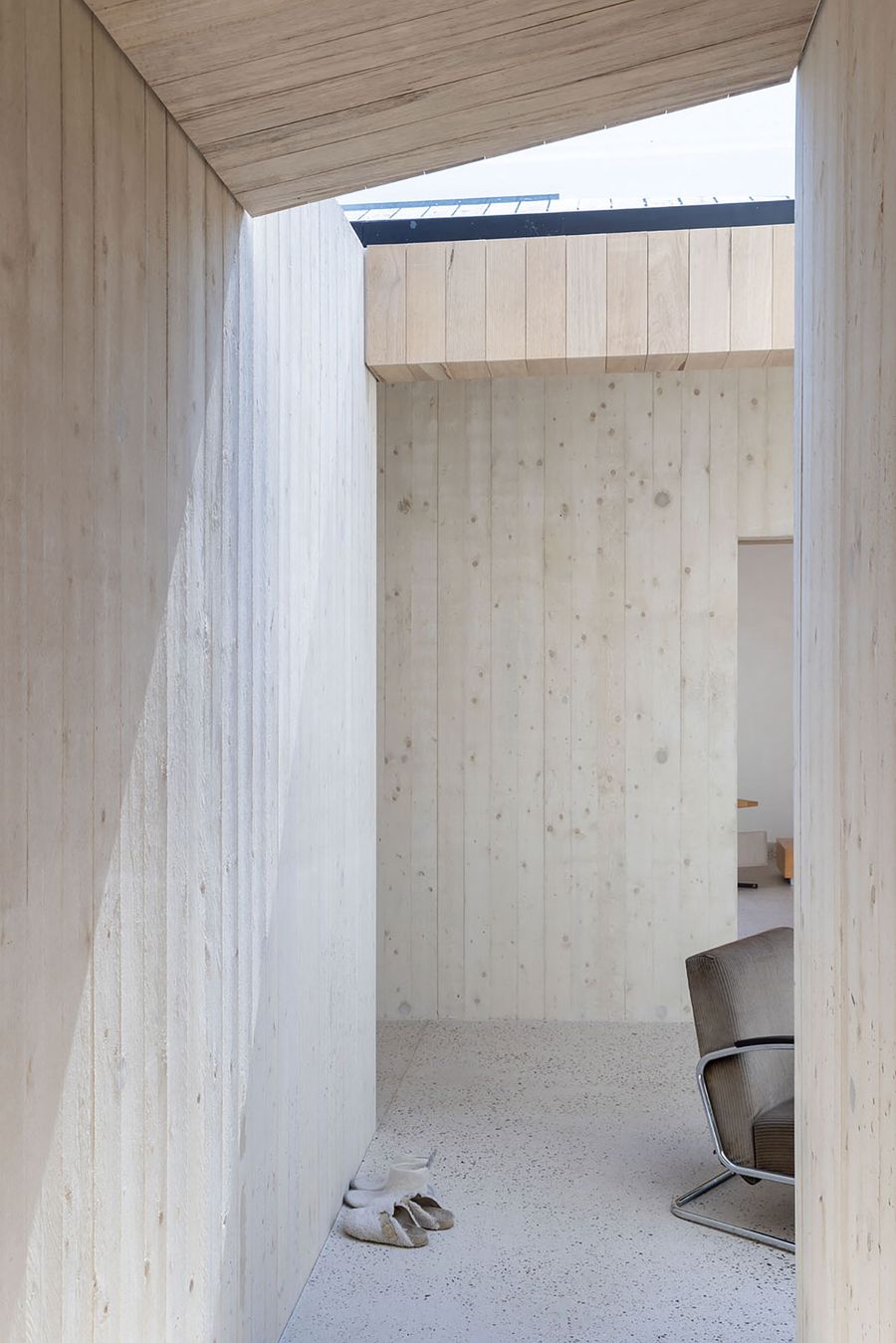
Photography by Iwan Baan.
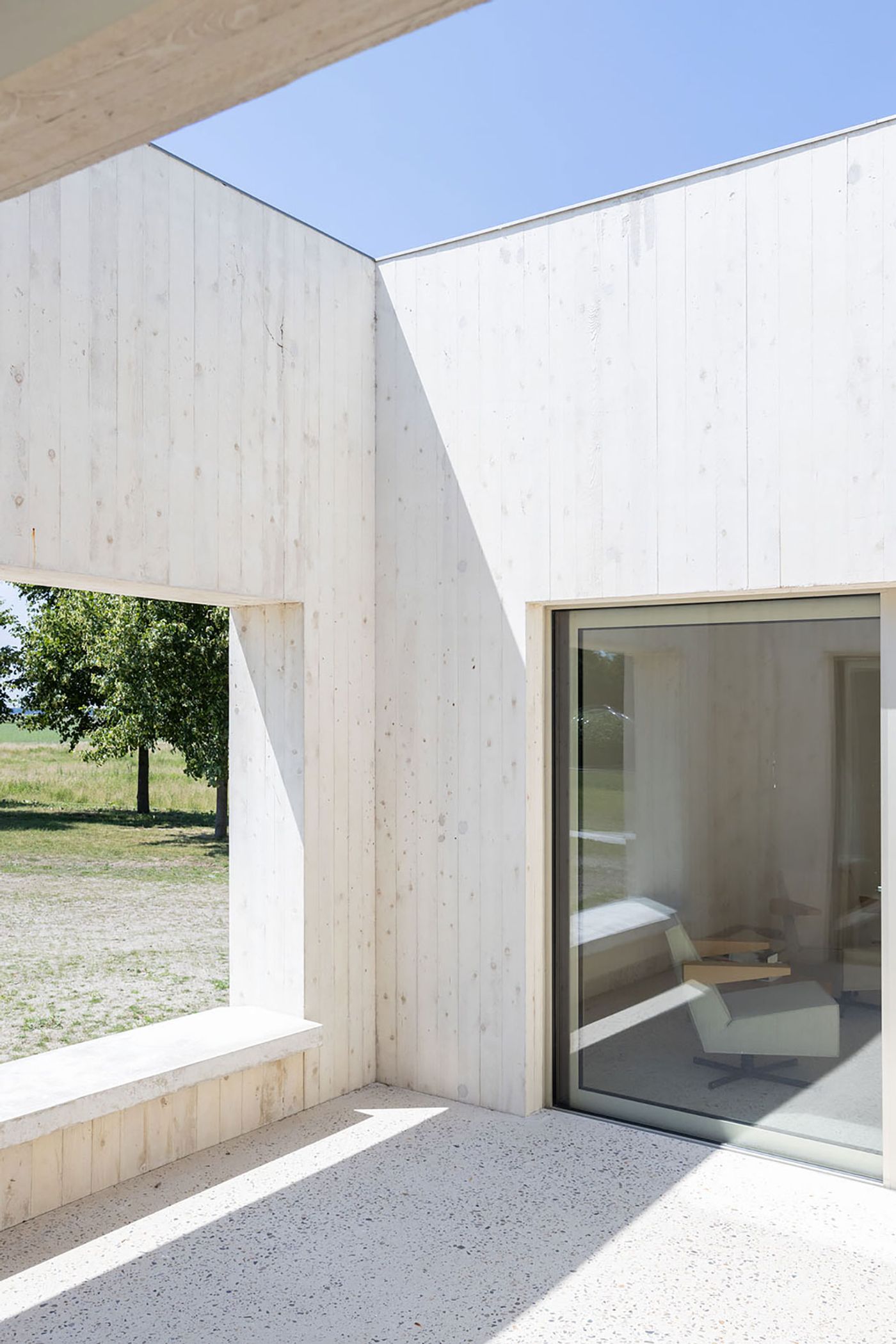
Photography by Iwan Baan.
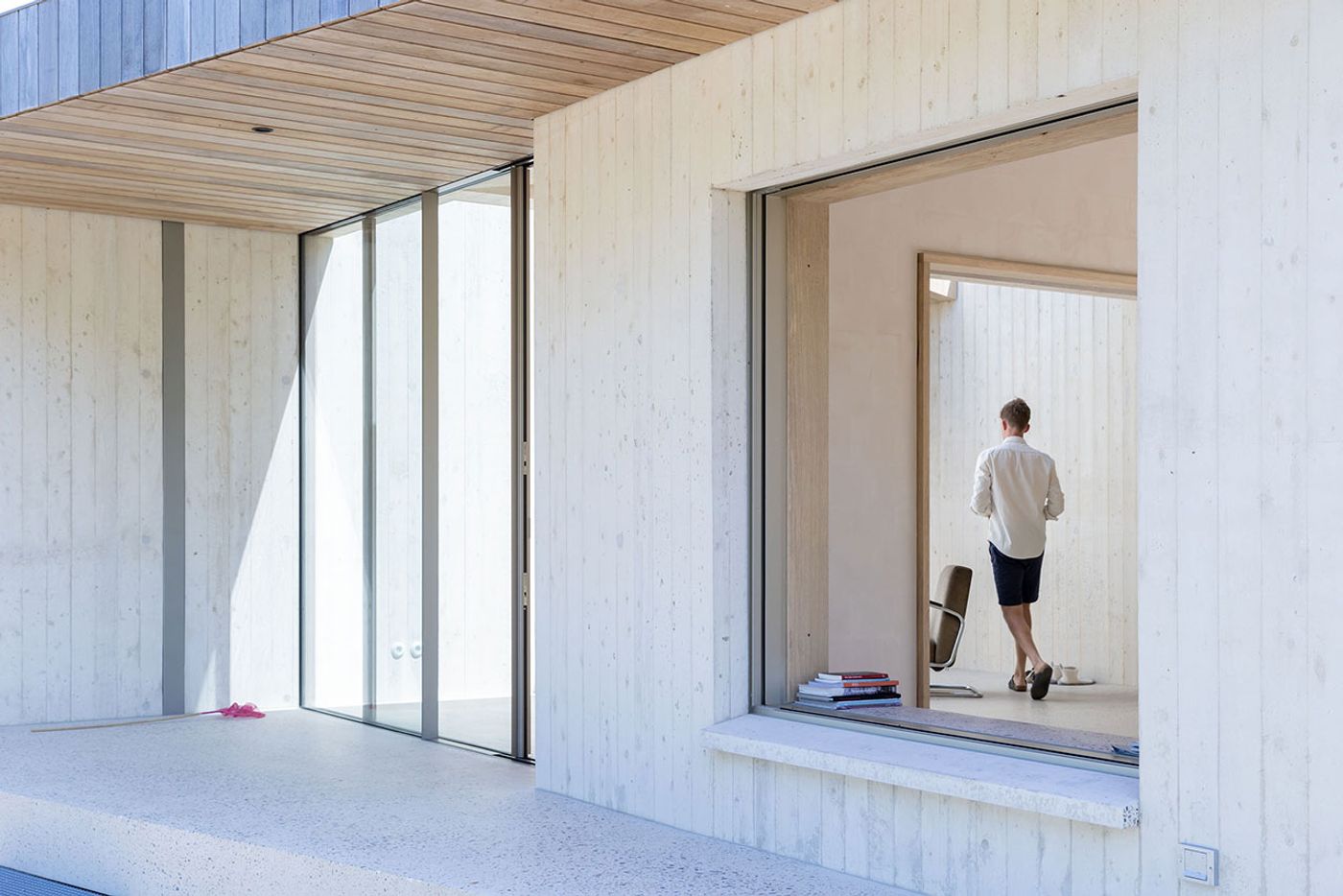
Photography by Iwan Baan.
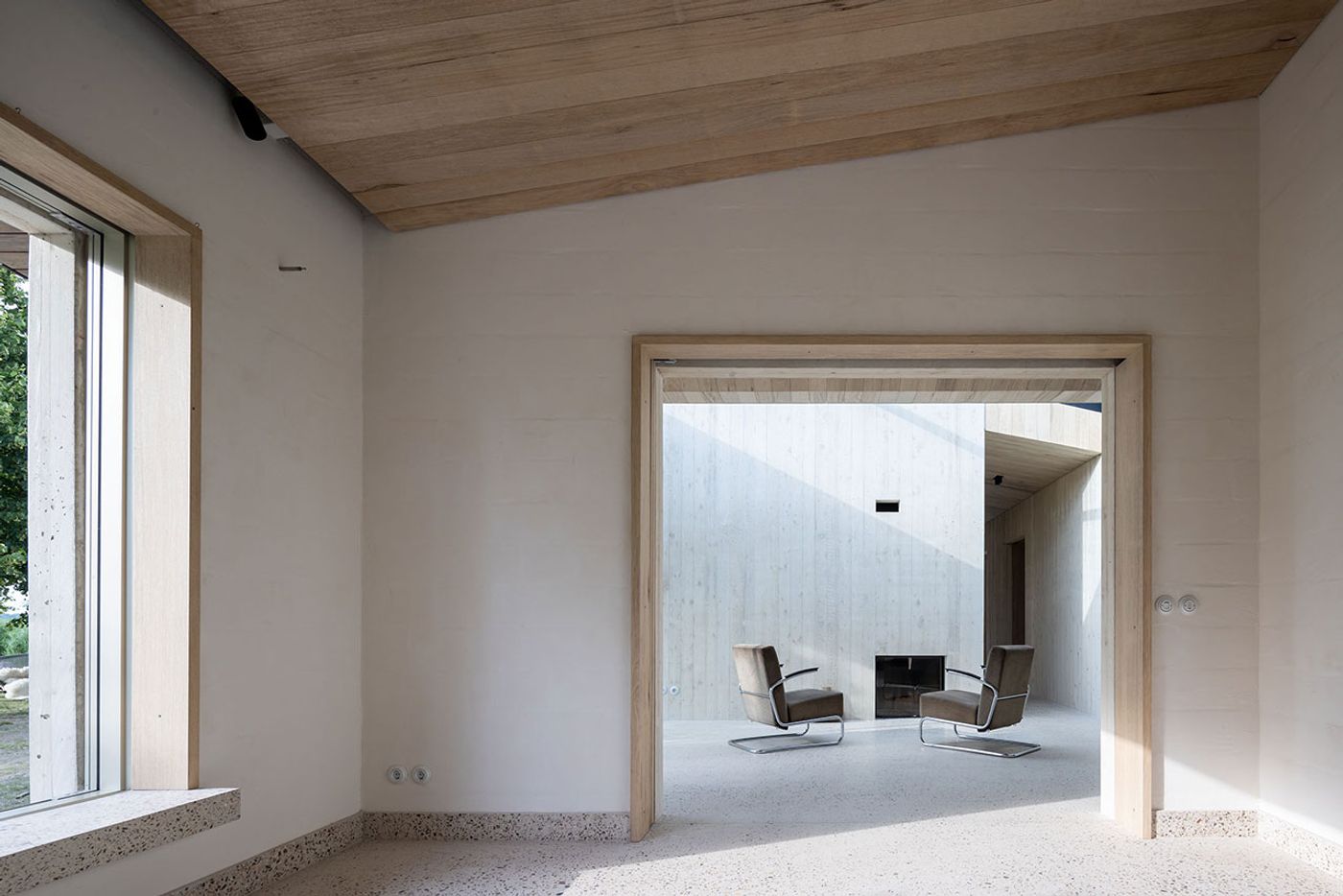
Photography by Iwan Baan.
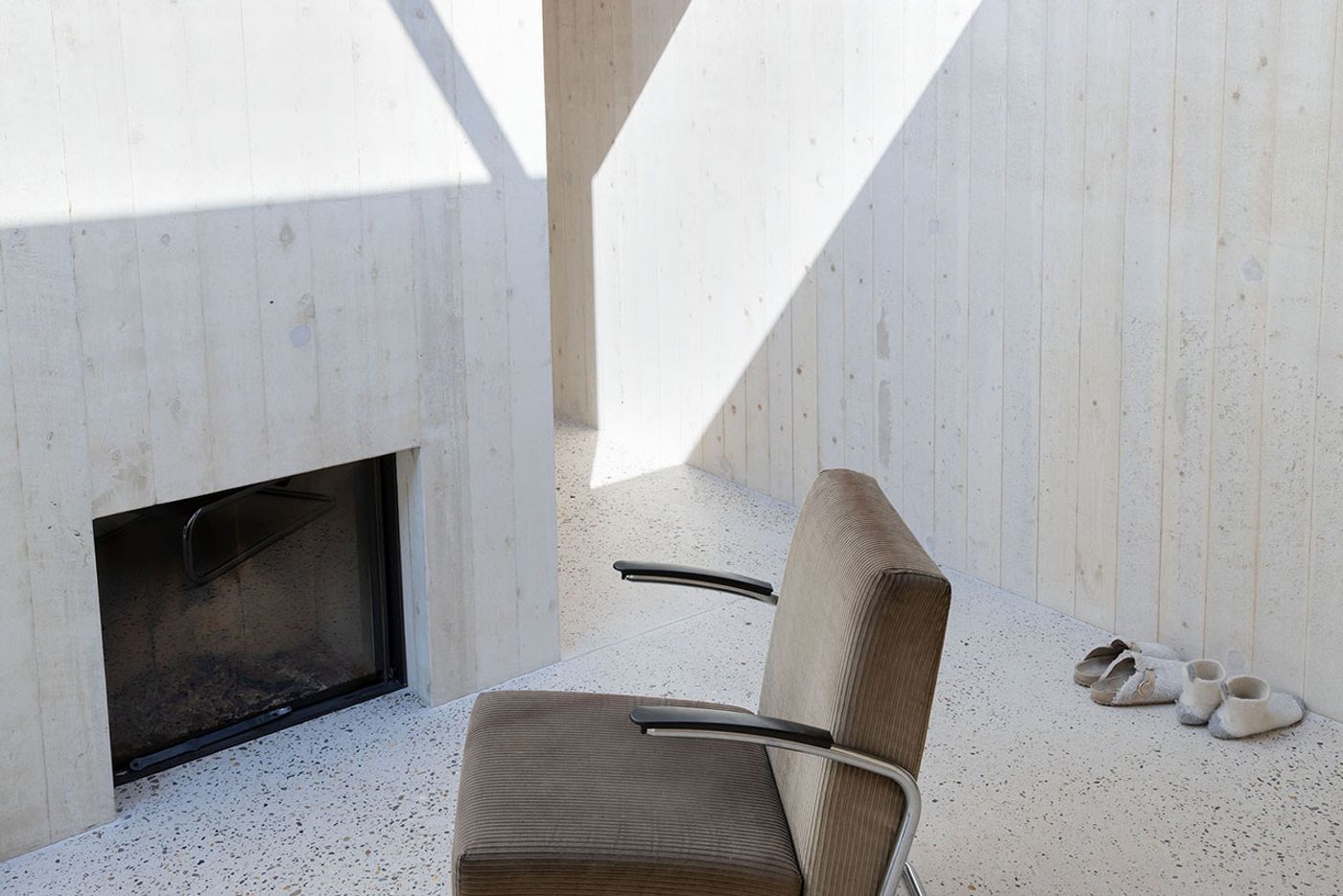
Photography by Iwan Baan.
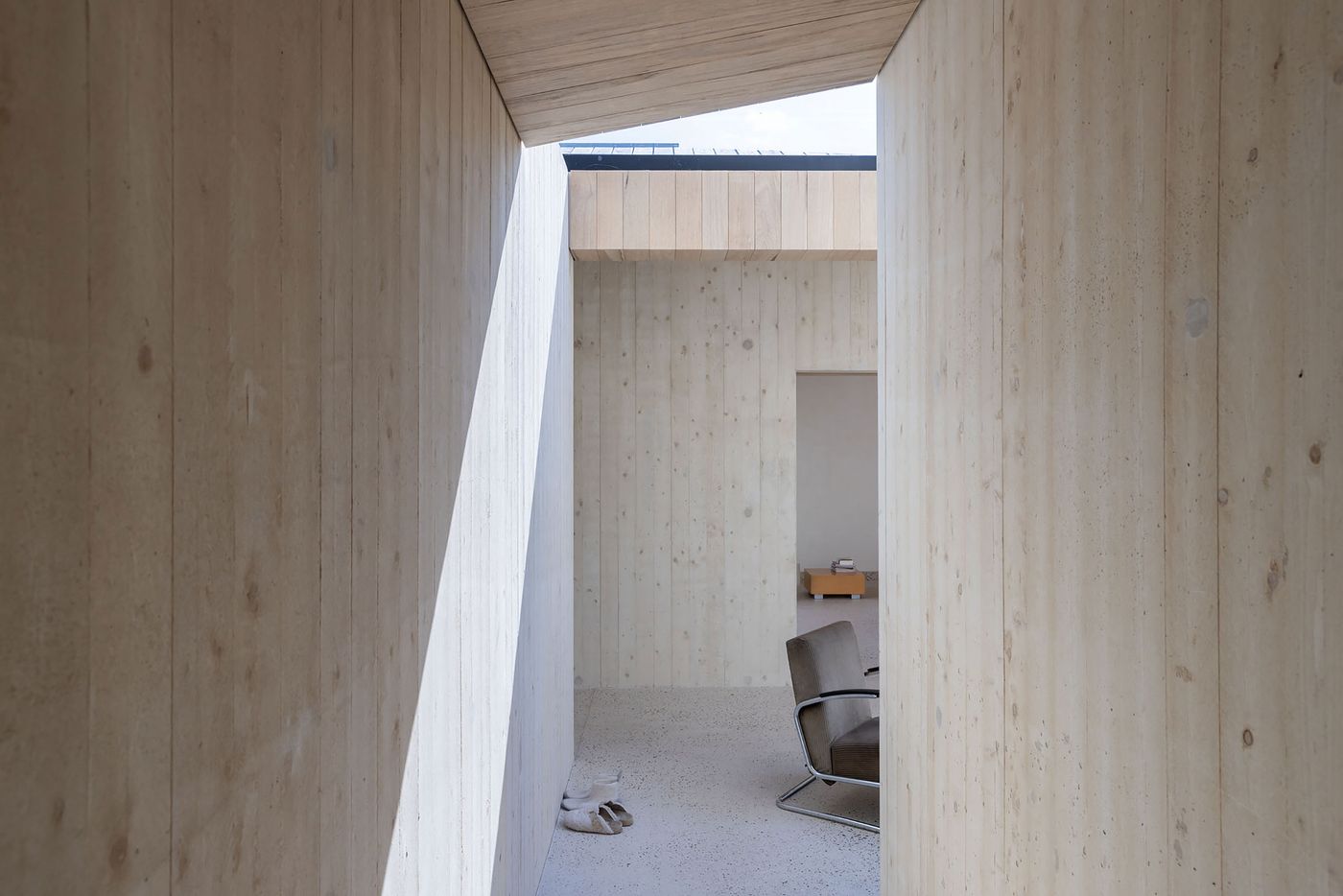
Photography by Iwan Baan.
A carefully thought-out configuration discretely separates the private quarters from the common areas while a series of larger and smaller windows and doors offers complementary views and sightlines. What makes this house stand out though is the architects’ focus on materials, colours and textures. Based on an extensive search for the right cement, type and size of pebbles, various grades of sand, and their relative proportions, the richly textured, poured-in-place concrete house is a paradigm of tactile beauty and ascetic elegance.
The concrete floors have been polished to reveal a naturally varying pebble-stone carpet, while the imprint of the pinewood formwork swathes the concrete walls in tactile organic patterns that echo the texture of the untreated timber planks on the roof and ceilings. Internal walls constructed from large ceramic bricks are punctured by slender timber door frames and windowsills and finished with a thin, coarsely applied coat of plaster which together with concrete skirtings and timber ceilings completes the pared-down interiors.
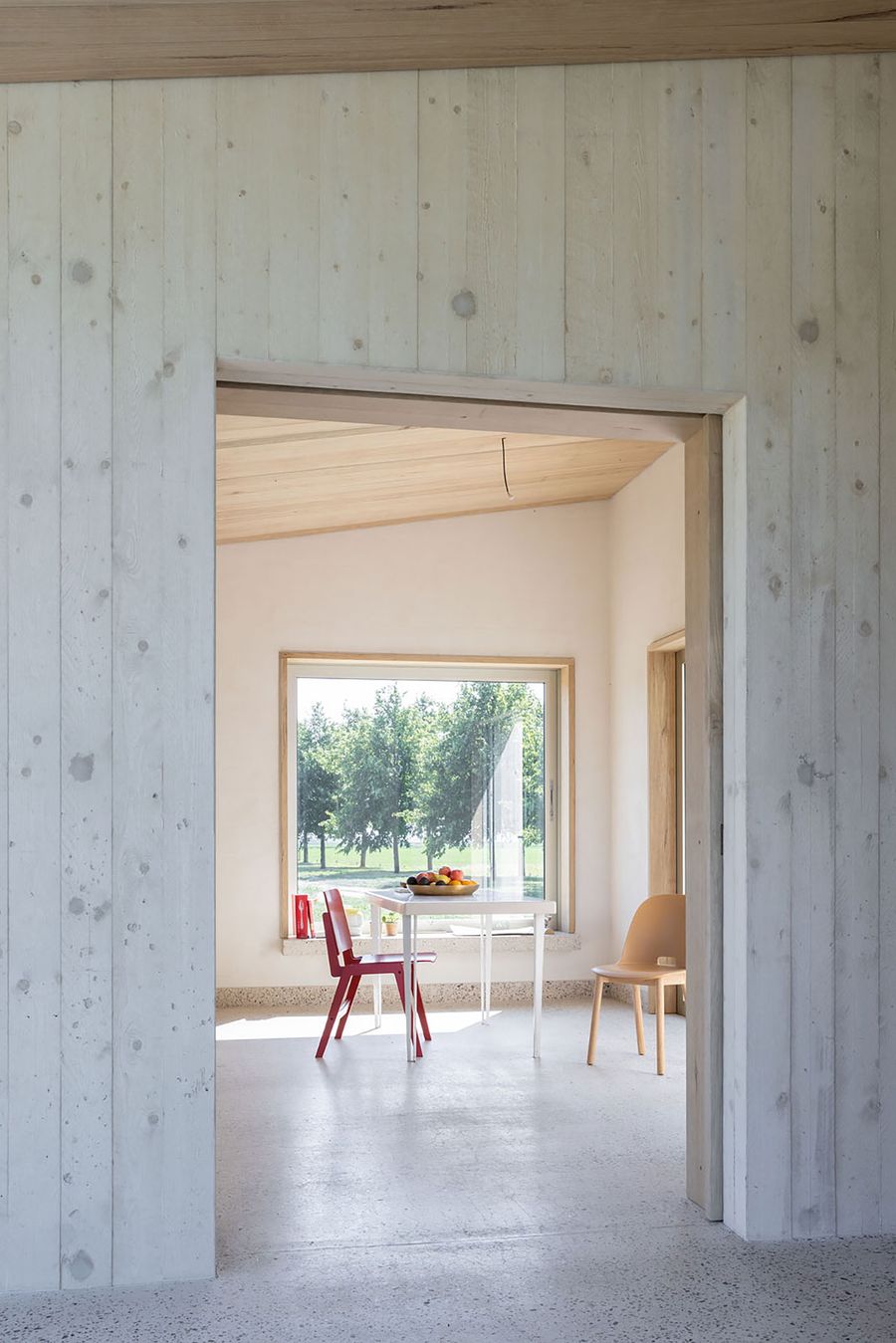
Photography by Iwan Baan.
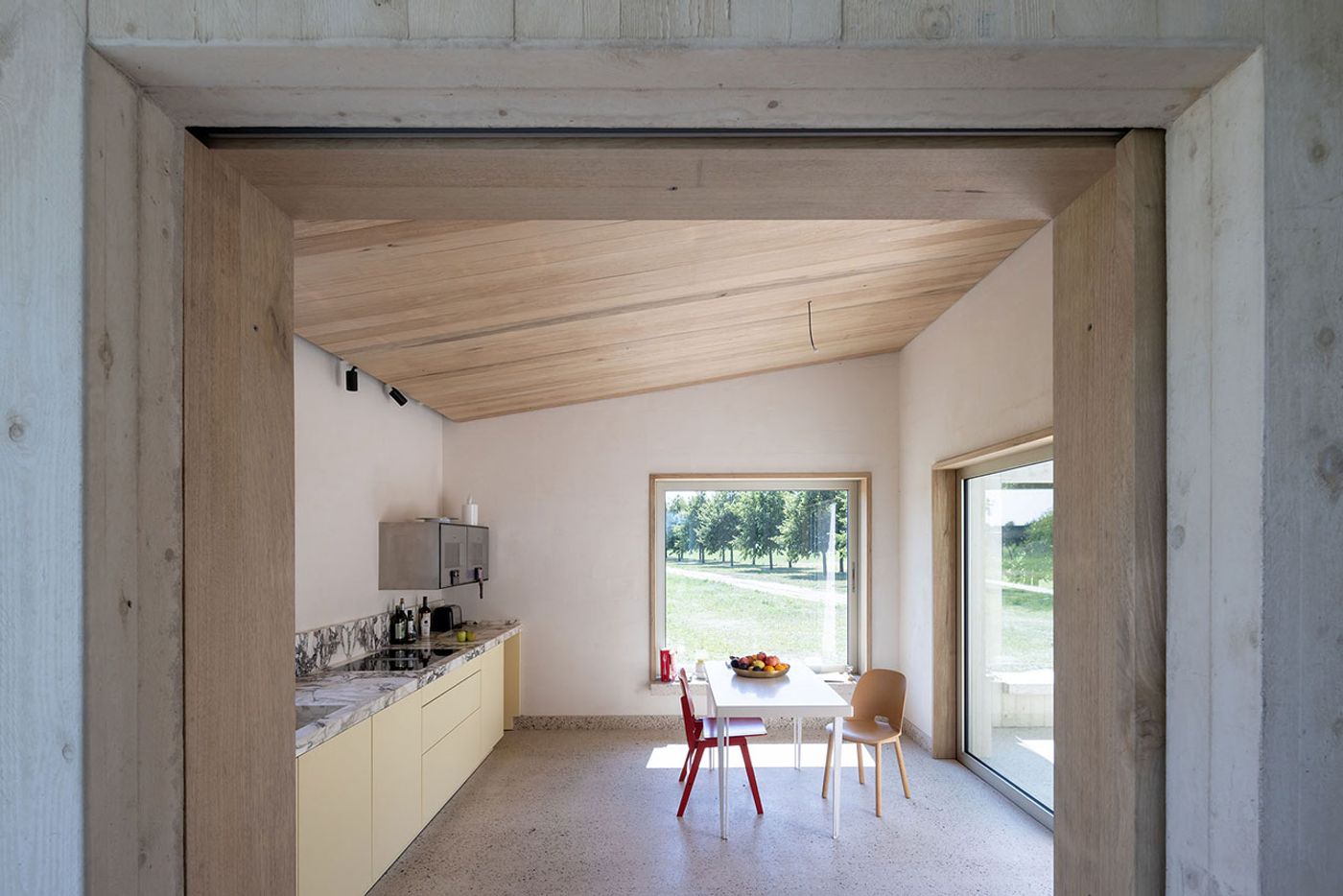
Photography by Iwan Baan.
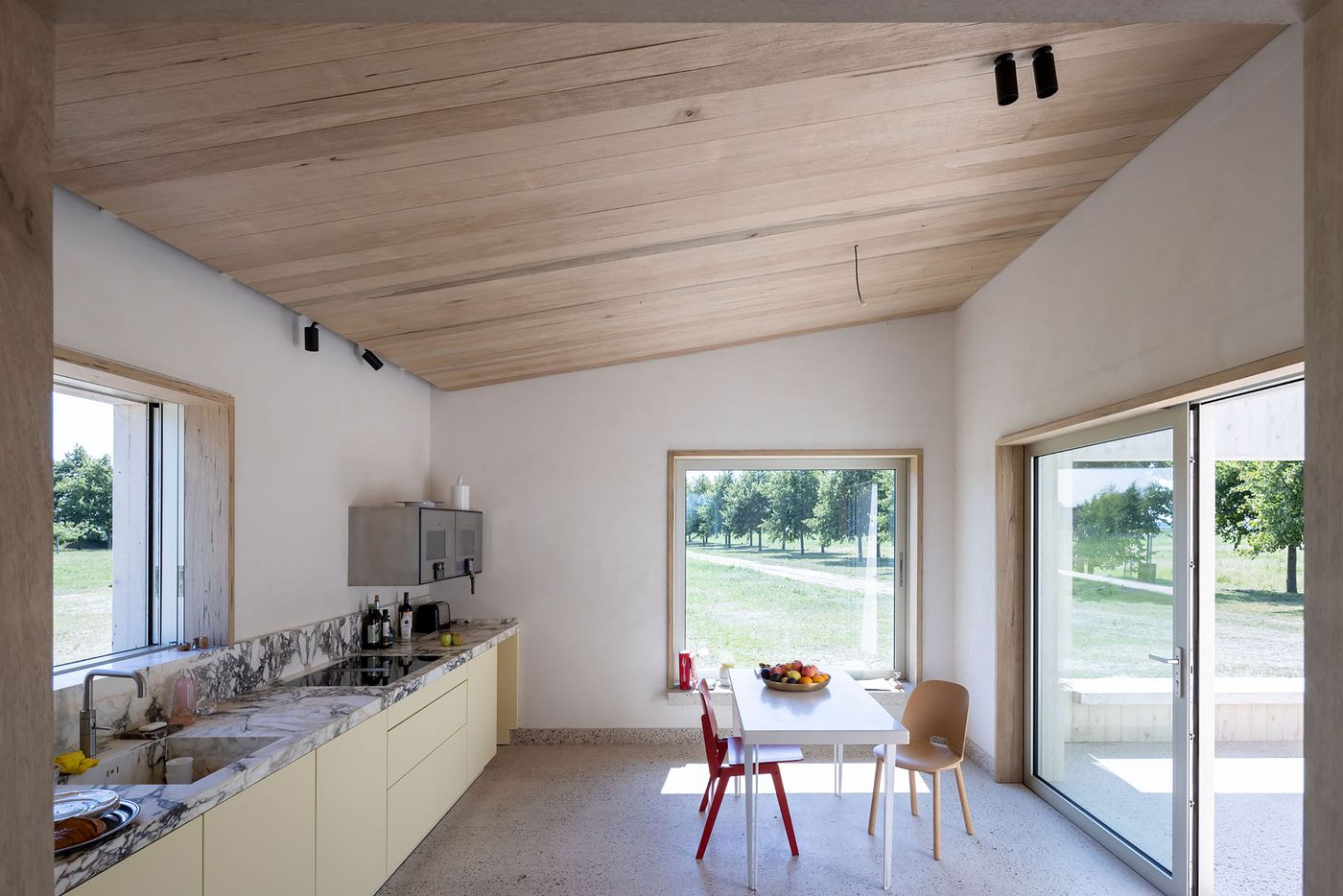
Photography by Iwan Baan.
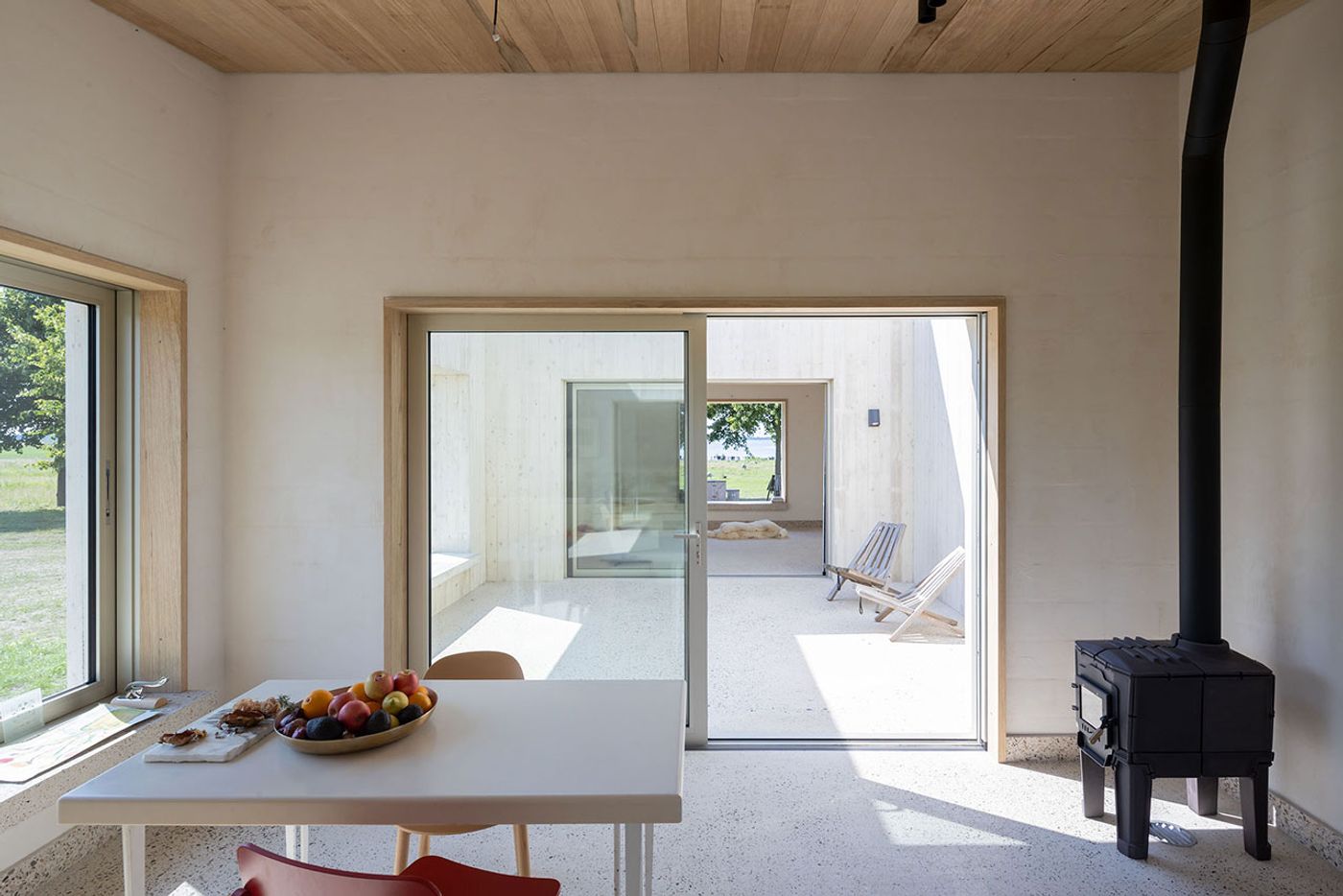
Photography by Iwan Baan.
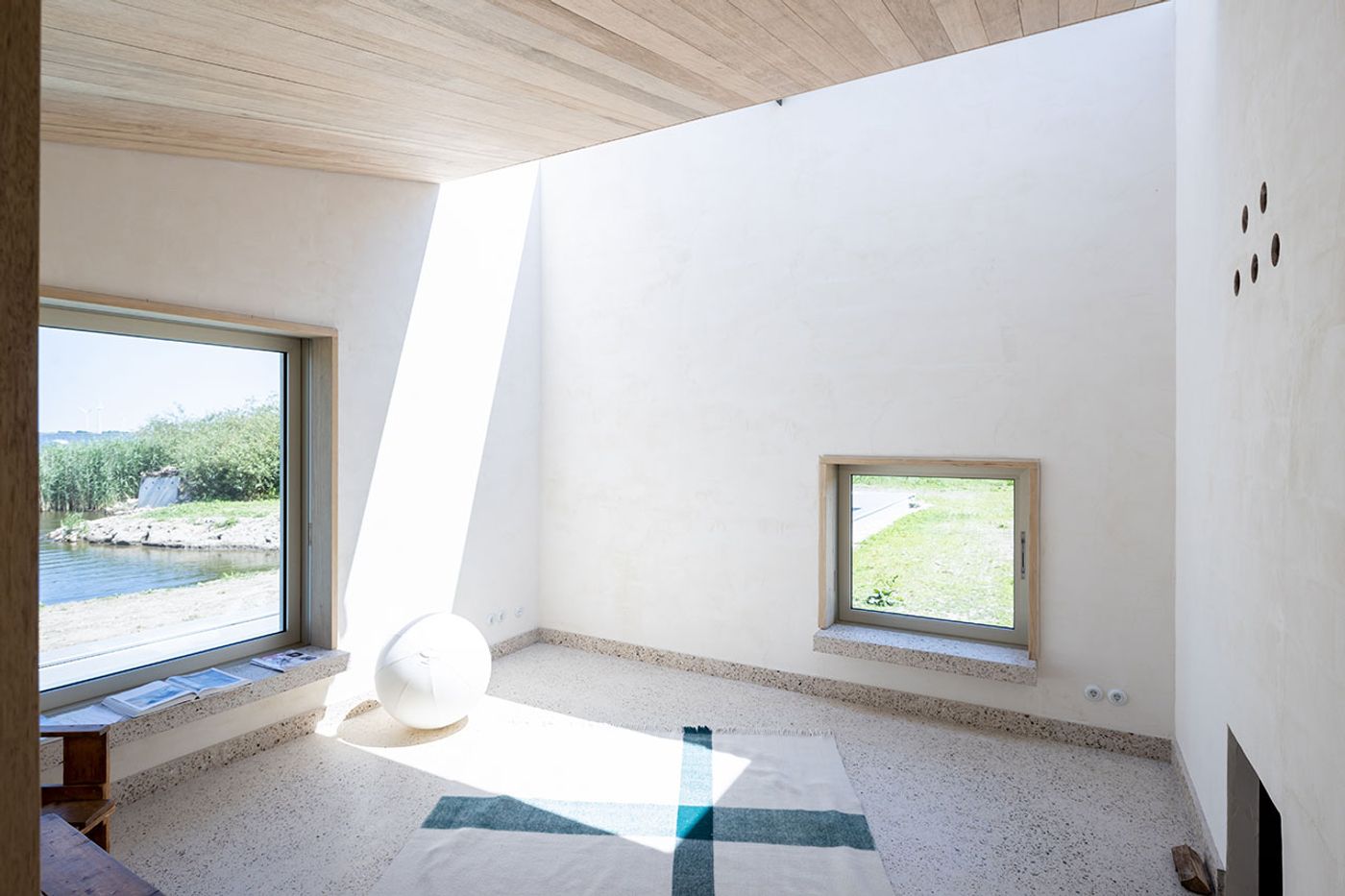
Photography by Iwan Baan.
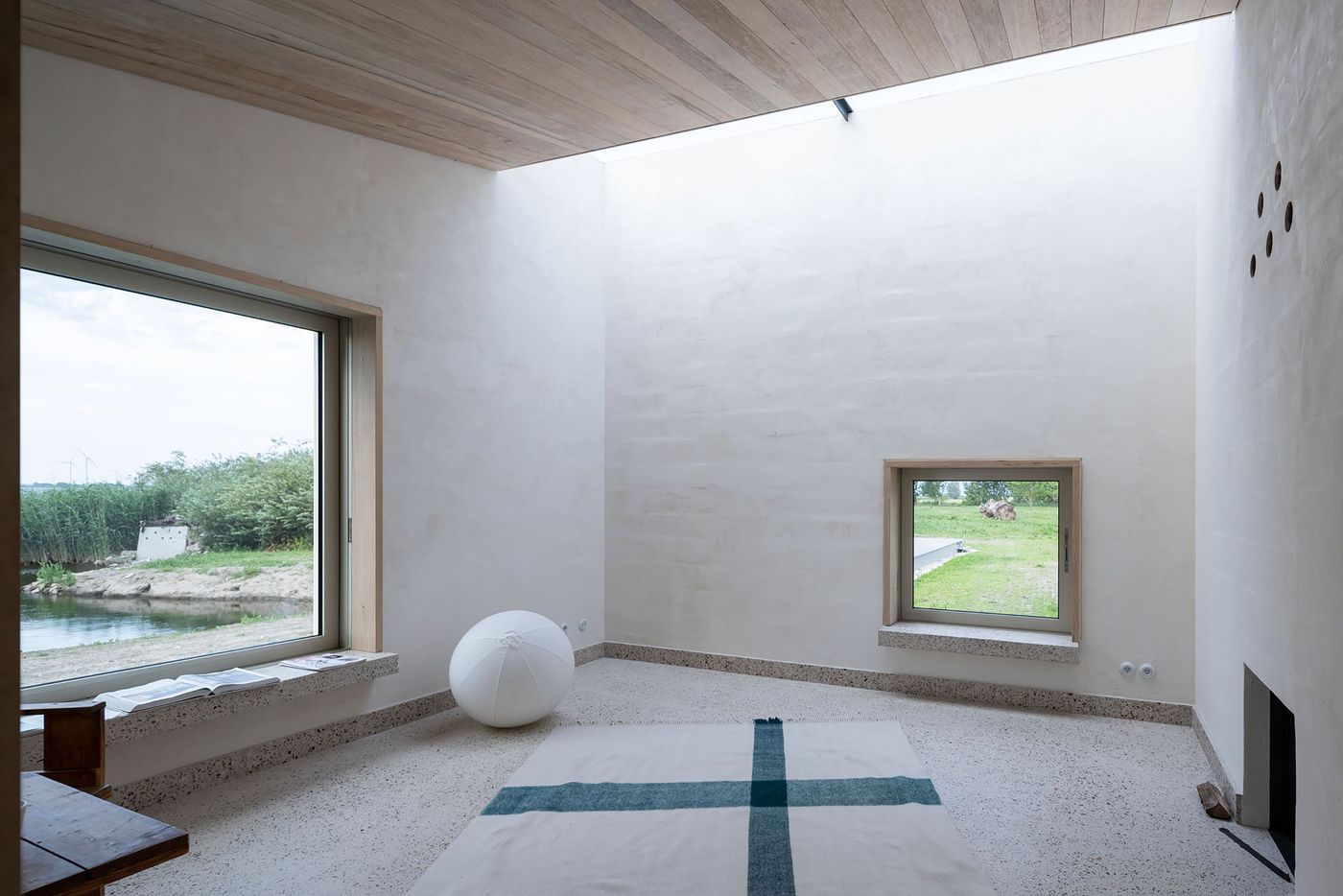
Photography by Iwan Baan.
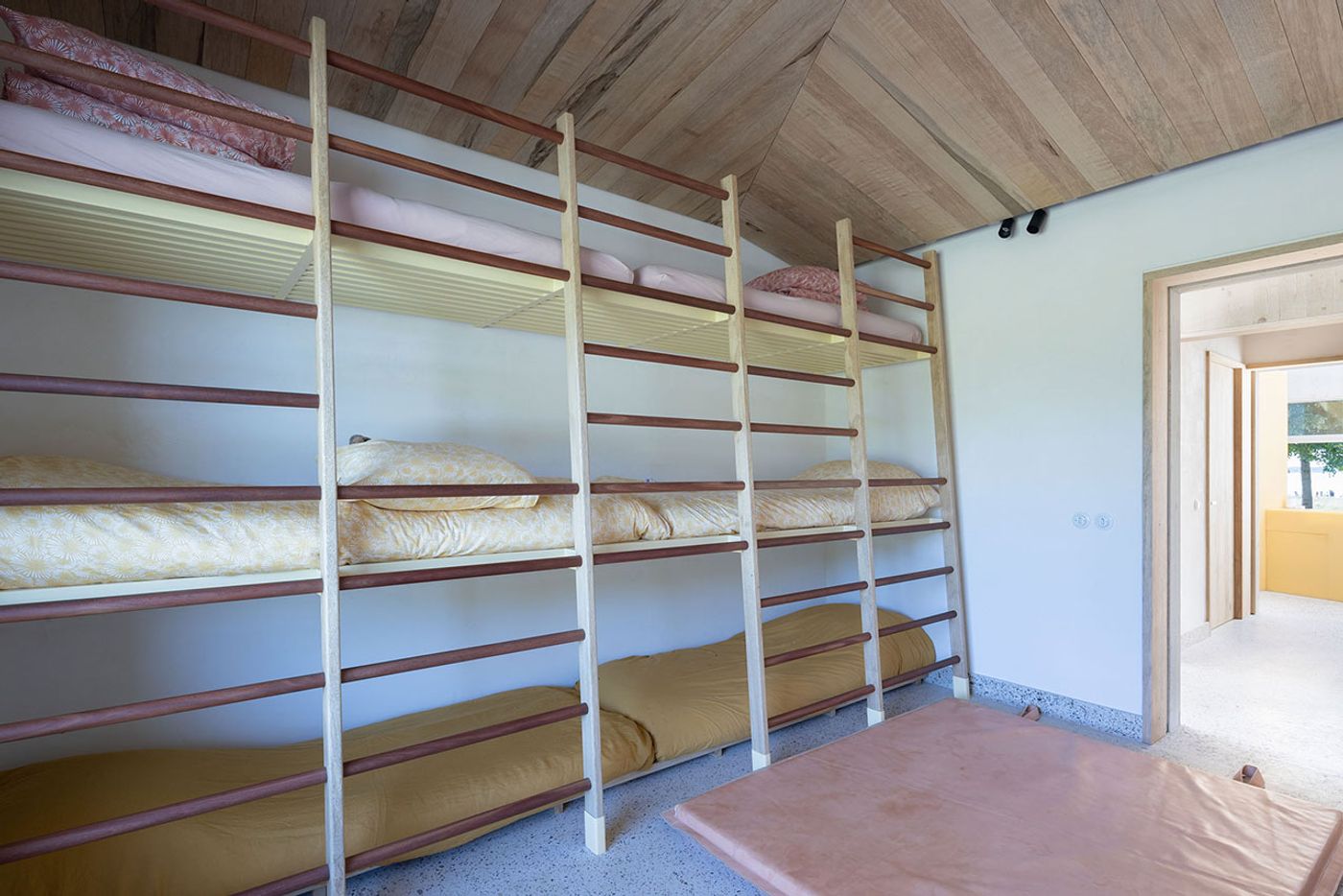
Photography by Iwan Baan.
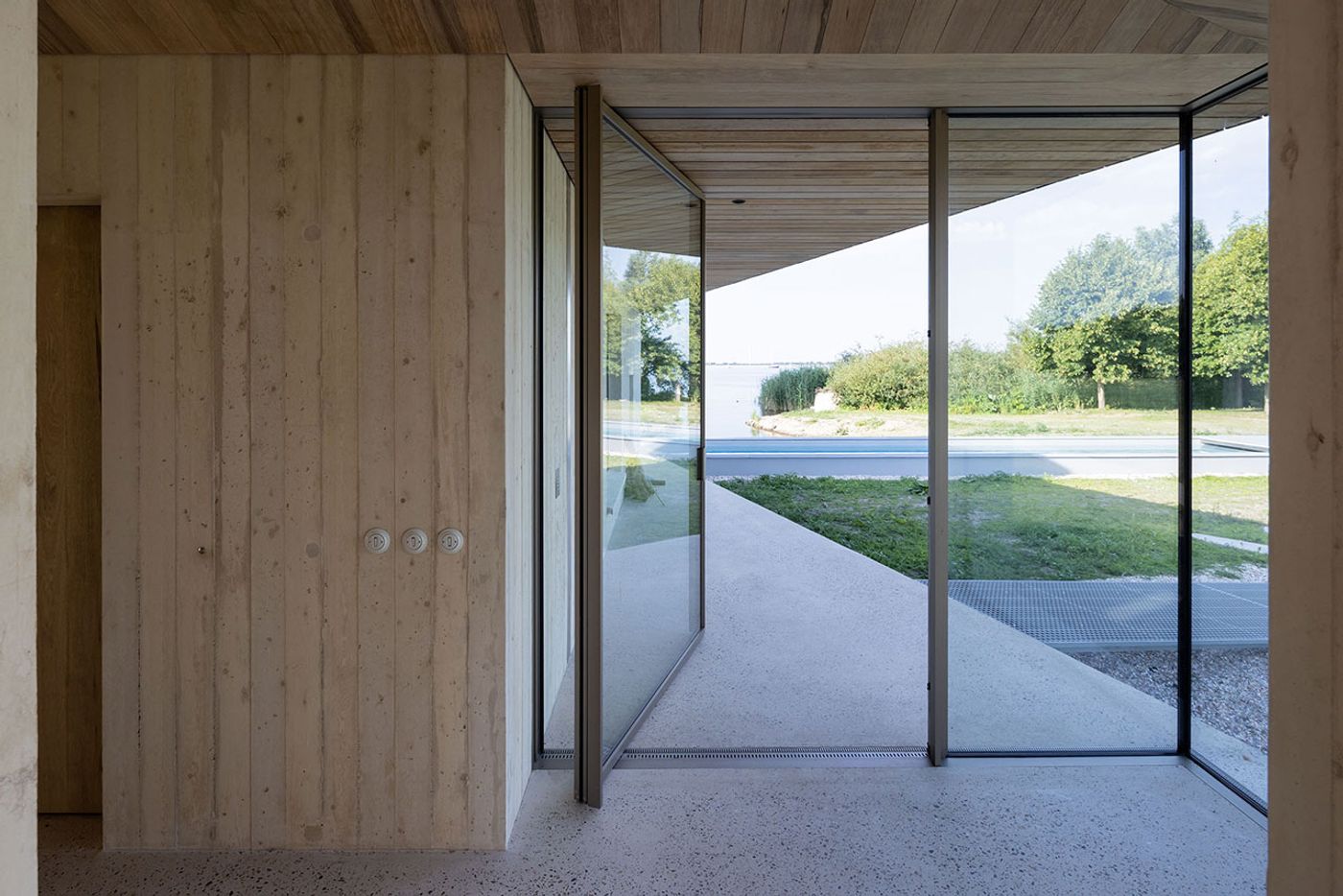
Photography by Iwan Baan.
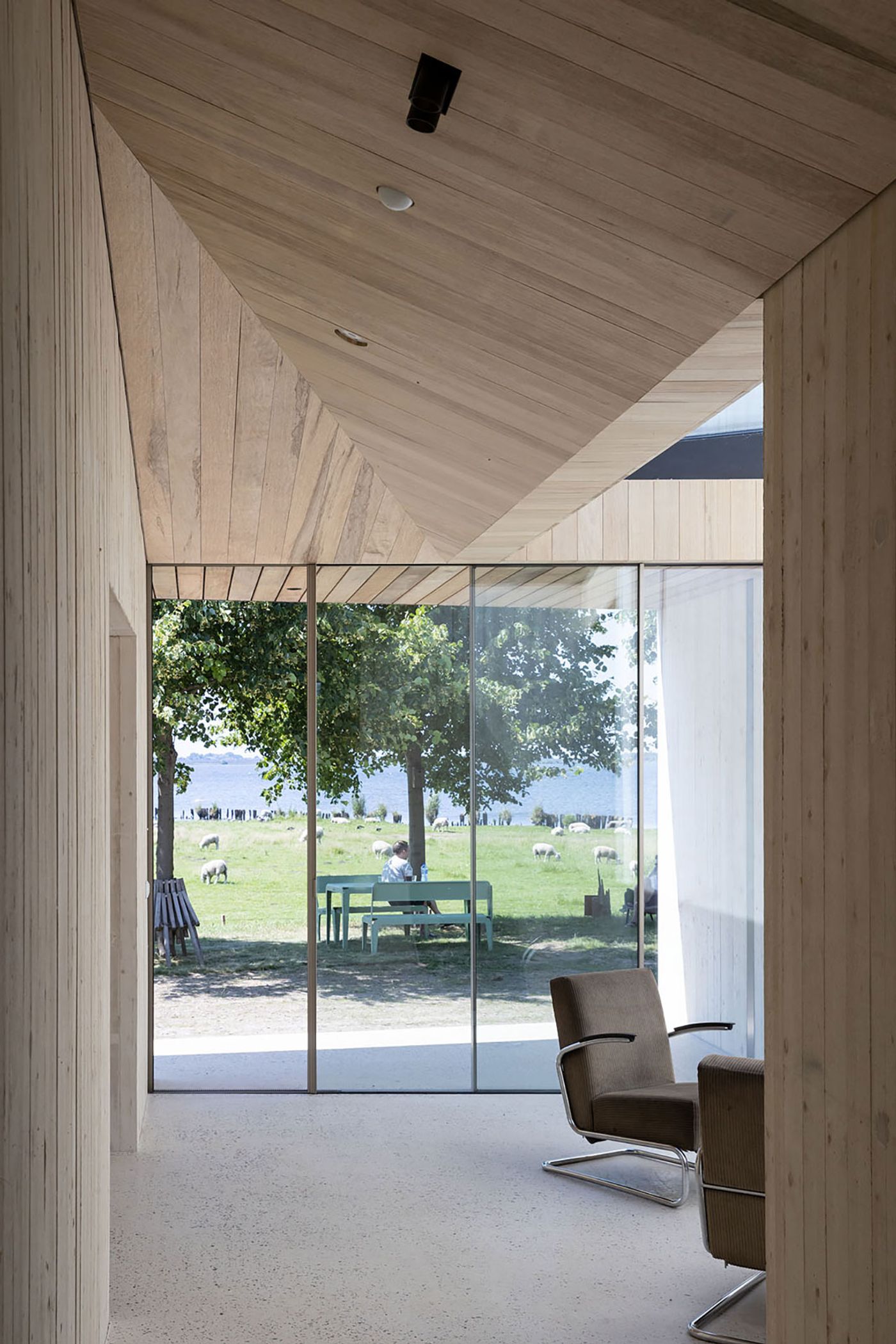
Photography by Iwan Baan.
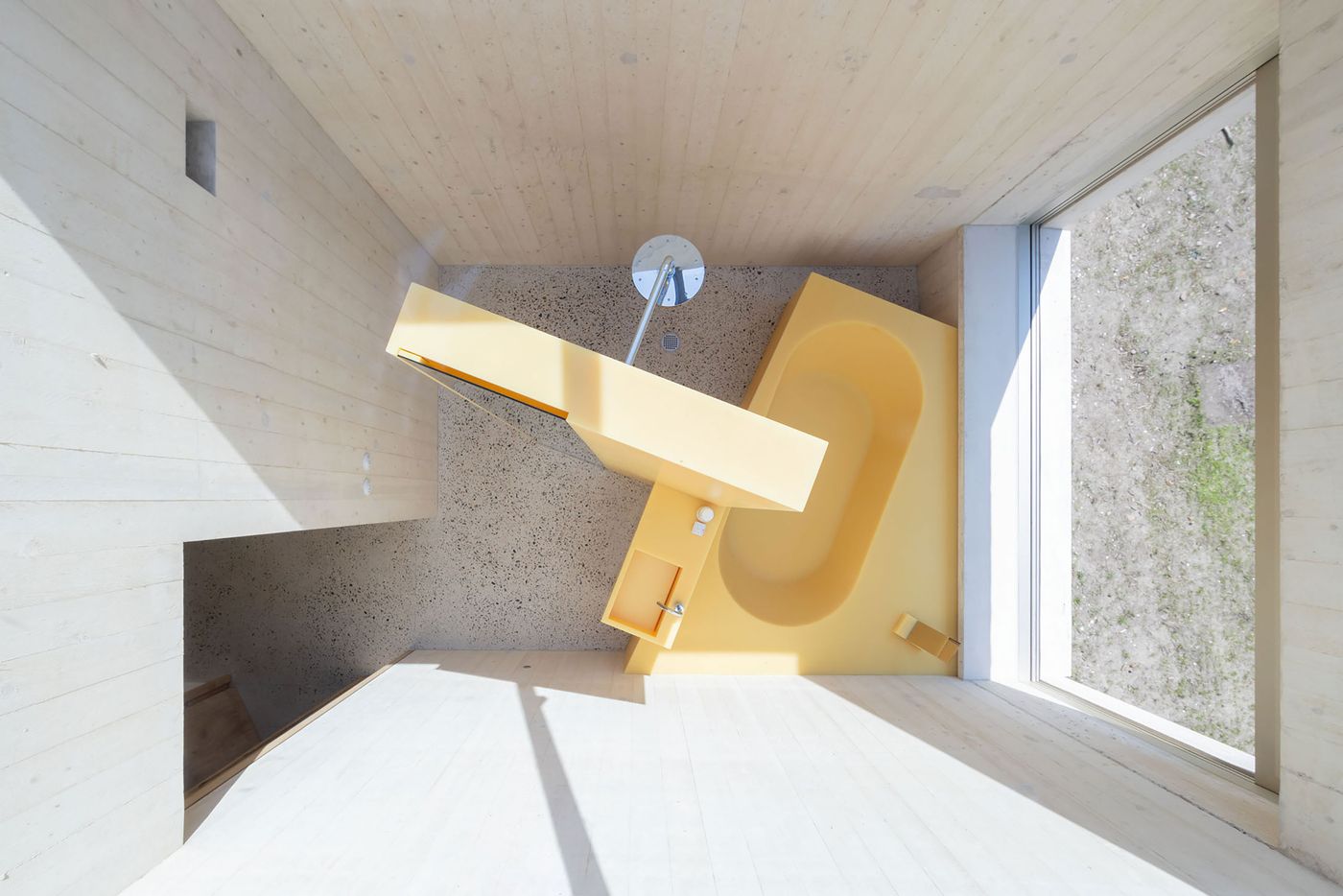
Photography by Iwan Baan.
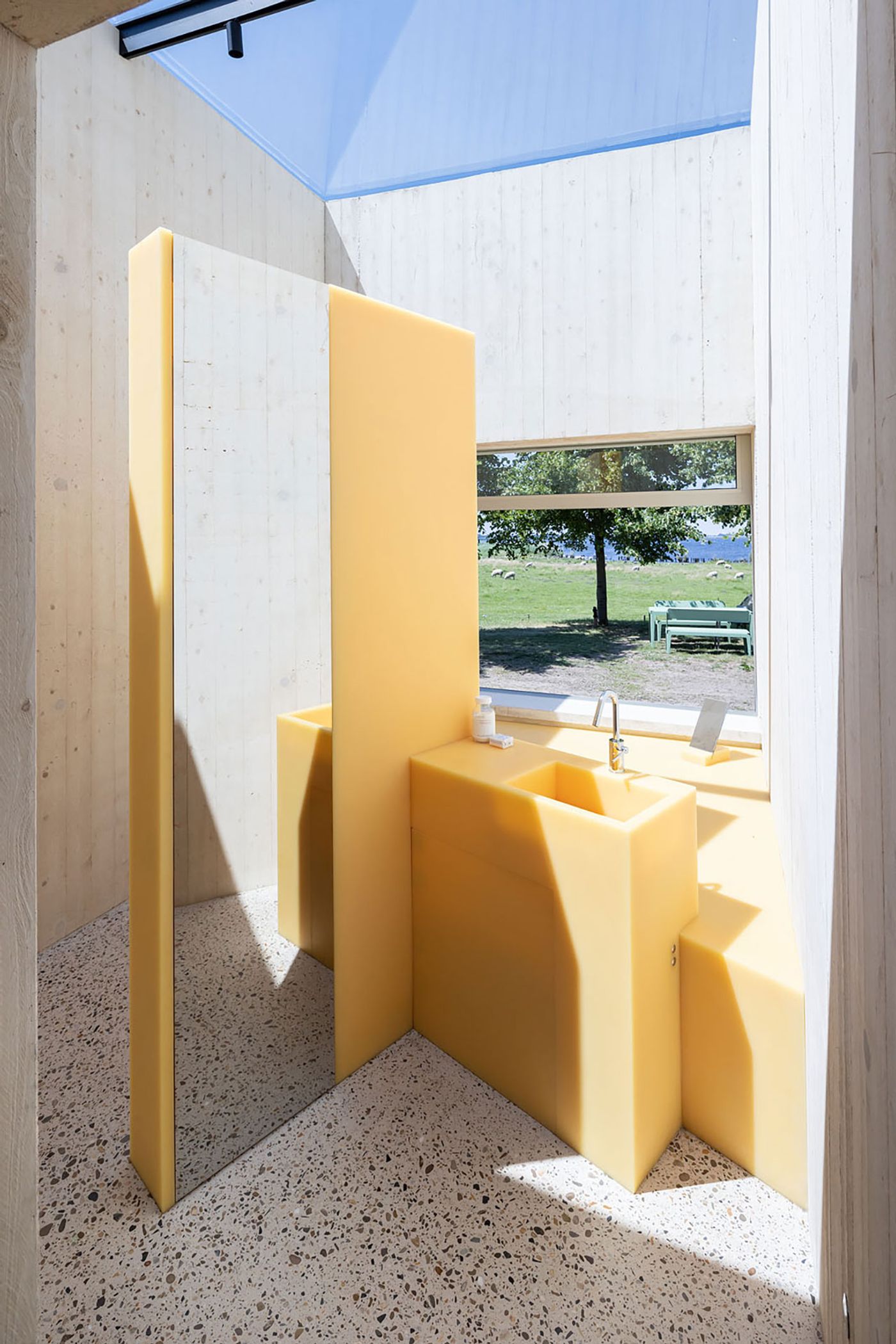
Photography by Iwan Baan.
Undoubtedly, the house’s most unique feature is Sabine Marcelis’ epoxy bathroom ensemble which stands out against the muted tones of the interiors with its sculptural design and yellow hue. Combining a washbasin, shower and bath in a single, monolithic volume, the free-standing structure is cleverly rotated to enhance views as well as improve functionality. Featuring a large window and a completely glazed roof, the bathroom truly feels like an outdoor space in line with the open character of the house, while its orientation means that occupants can watch the sunset while taking a bubble bath providing the ultimate opportunity to enjoy the beauty and tranquillity of the abundant natural landscape outside.
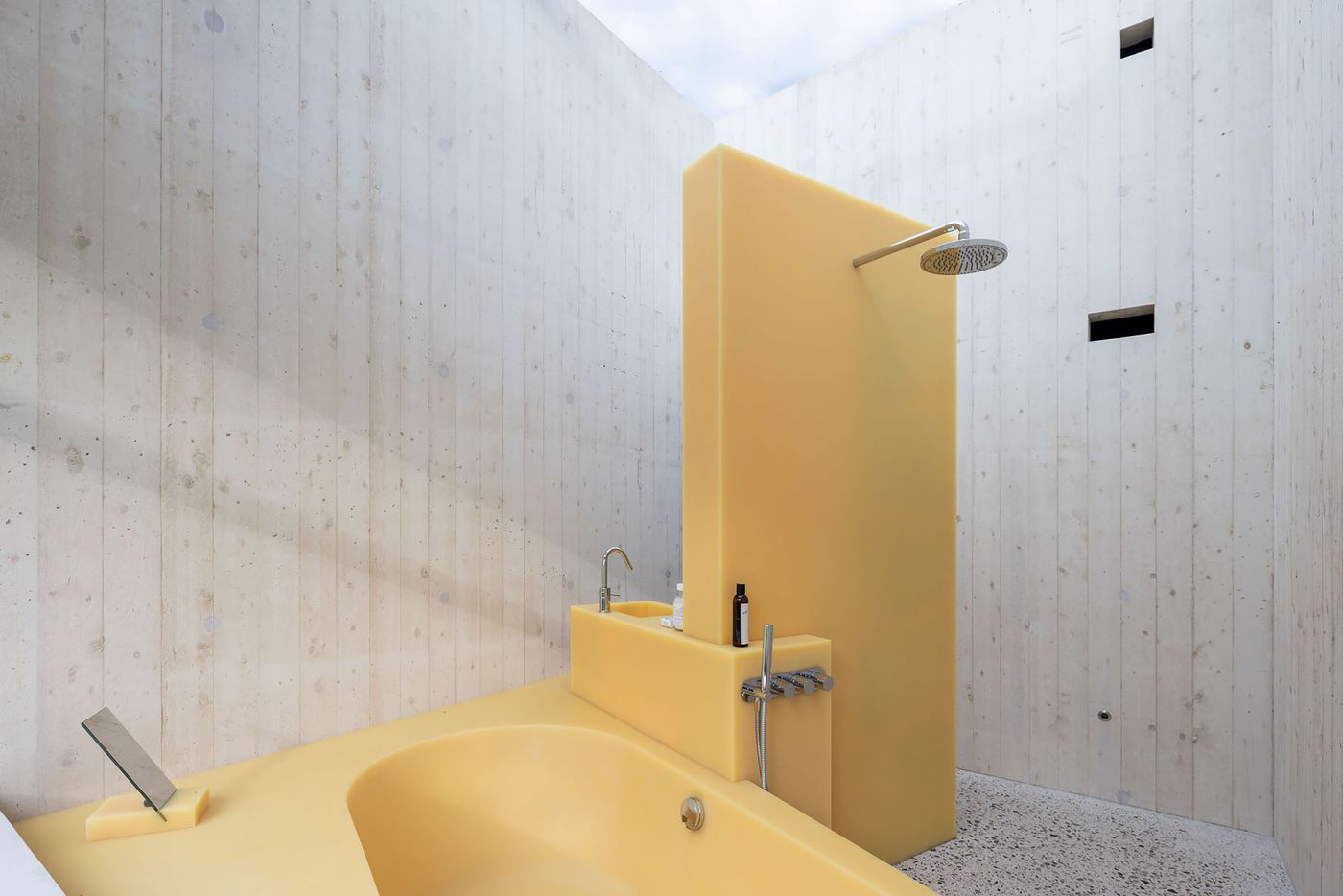
Photography by Iwan Baan.
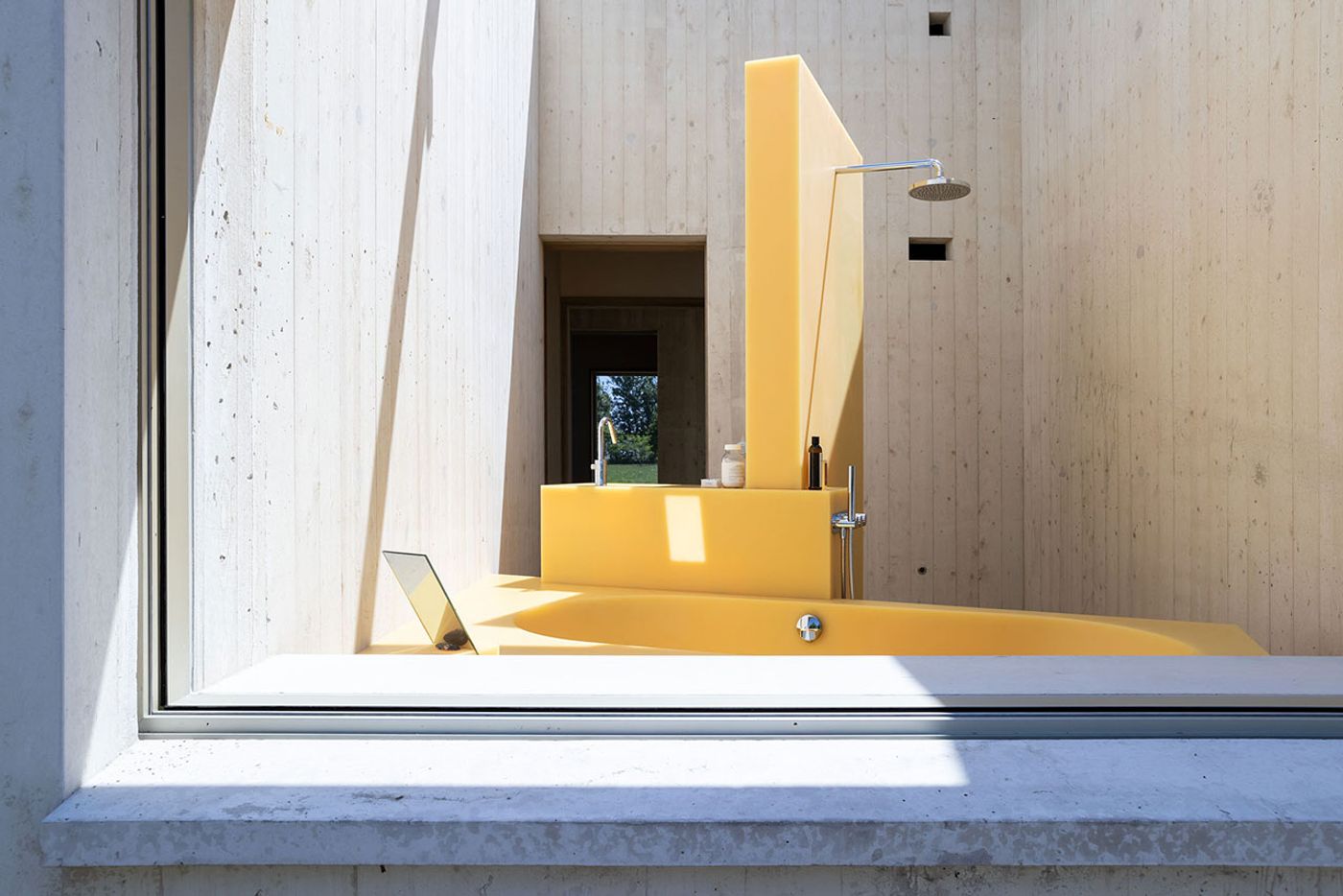
Photography by Iwan Baan.
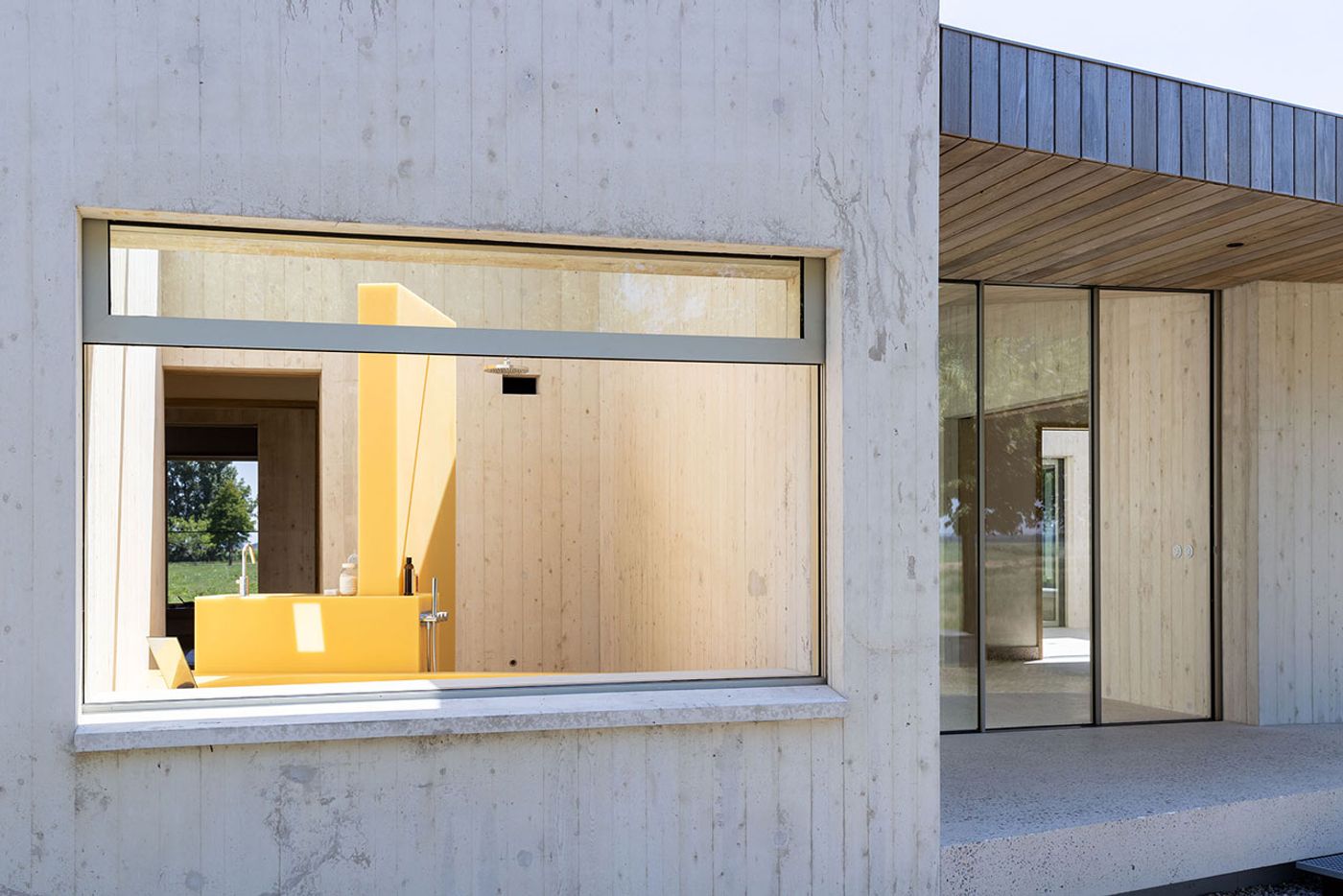
Photography by Iwan Baan.
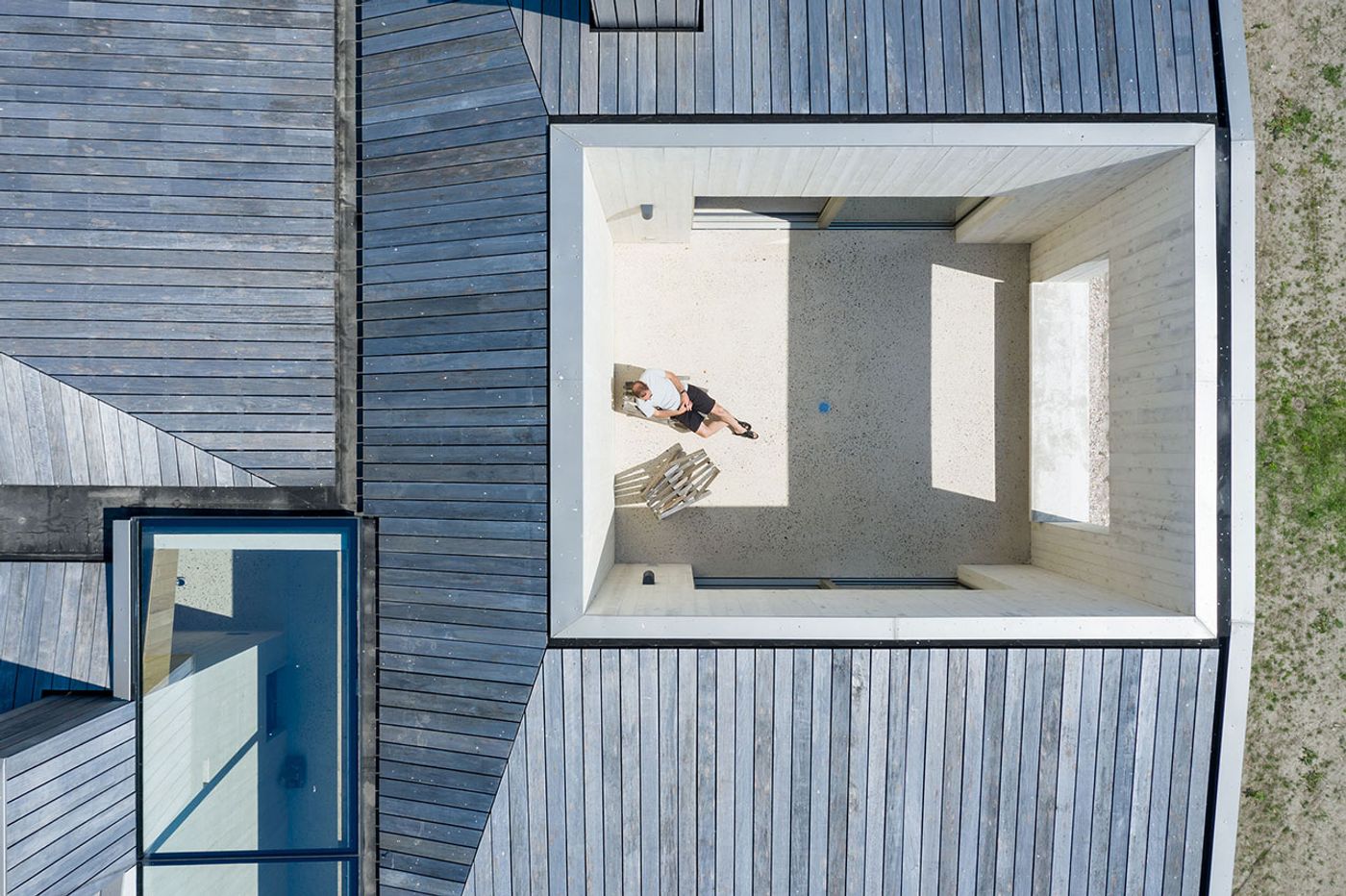
Photography by Iwan Baan.
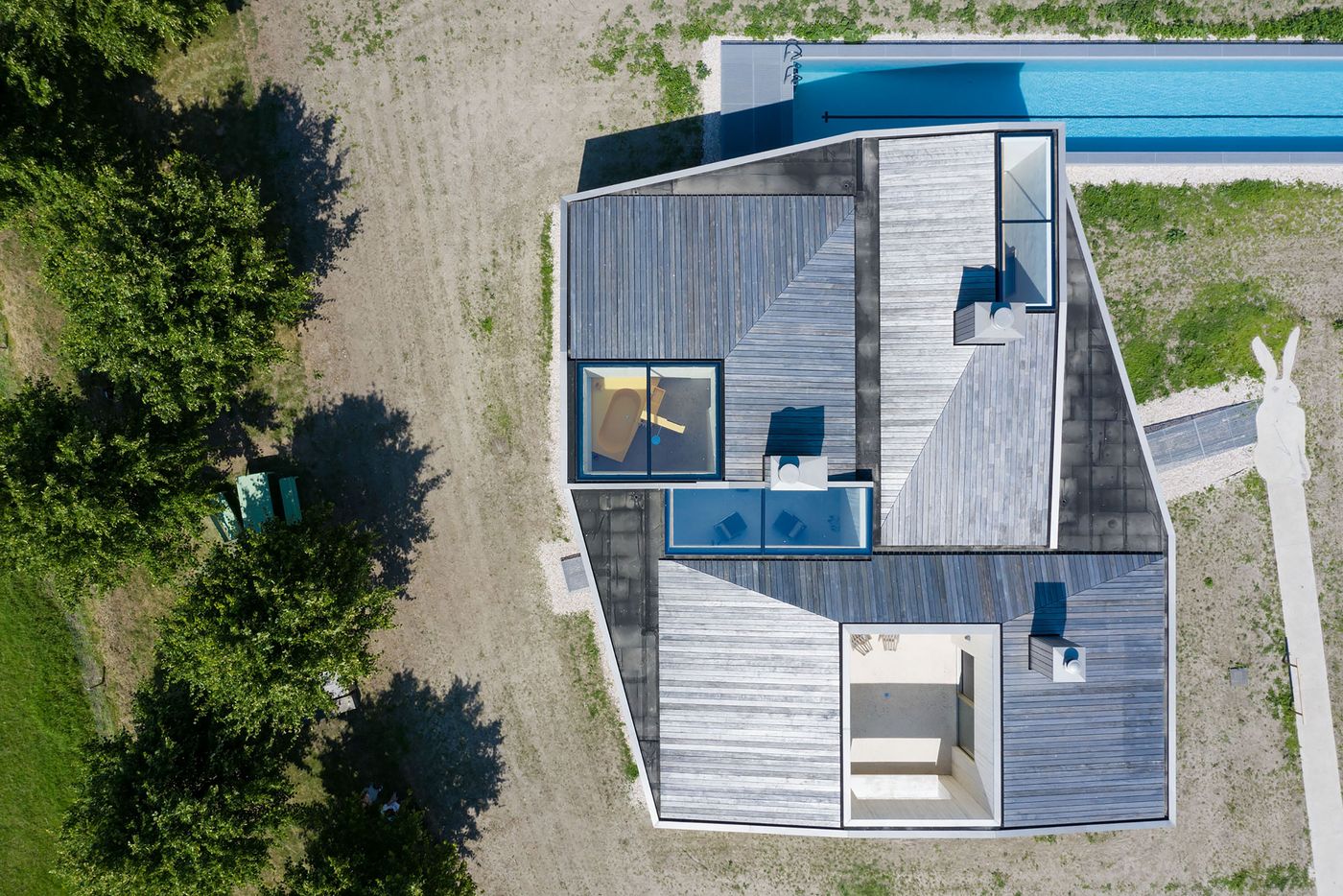
Photography by Iwan Baan.
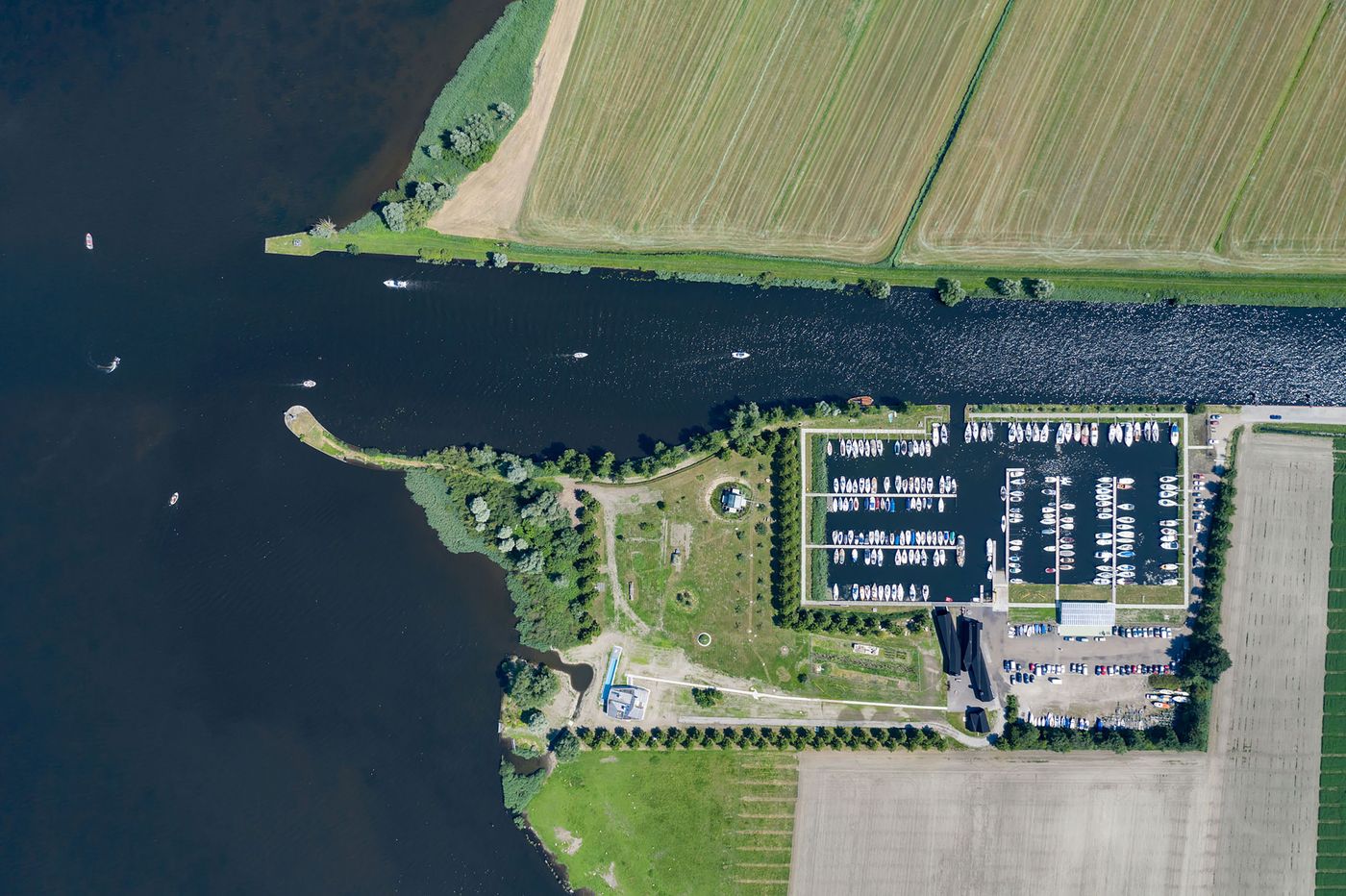
Photography by Iwan Baan.
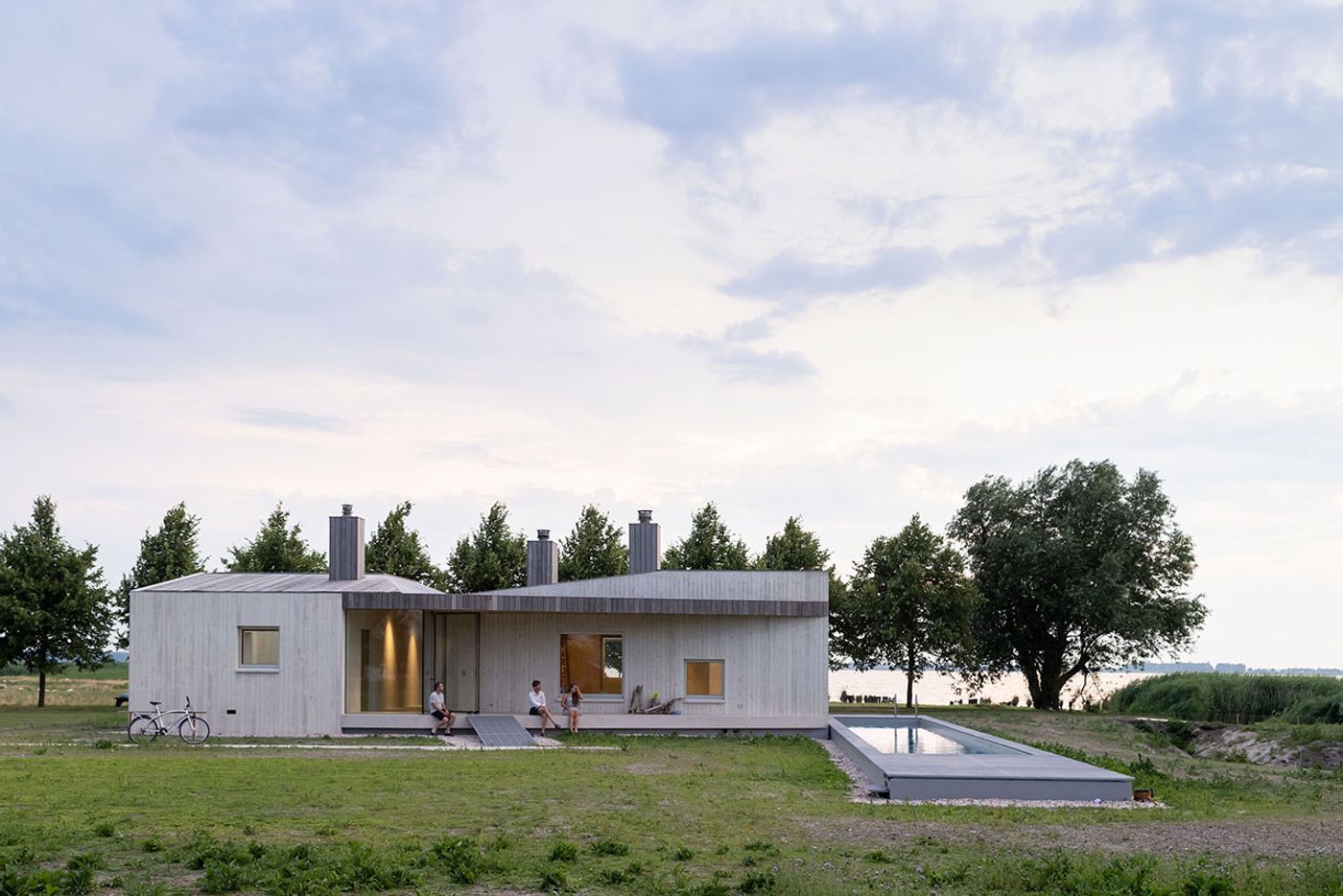
Photography by Iwan Baan.
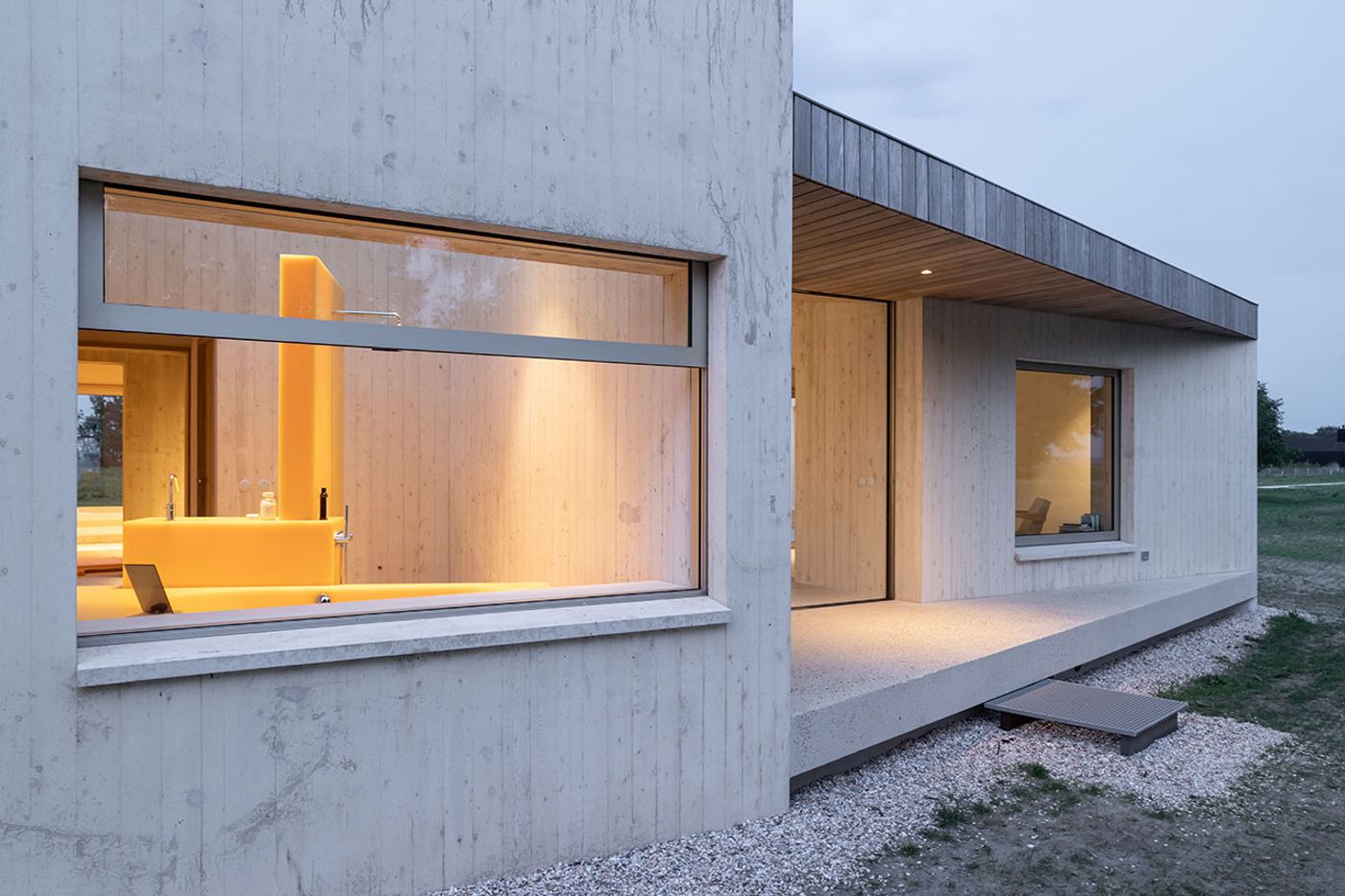
Photography by Iwan Baan.
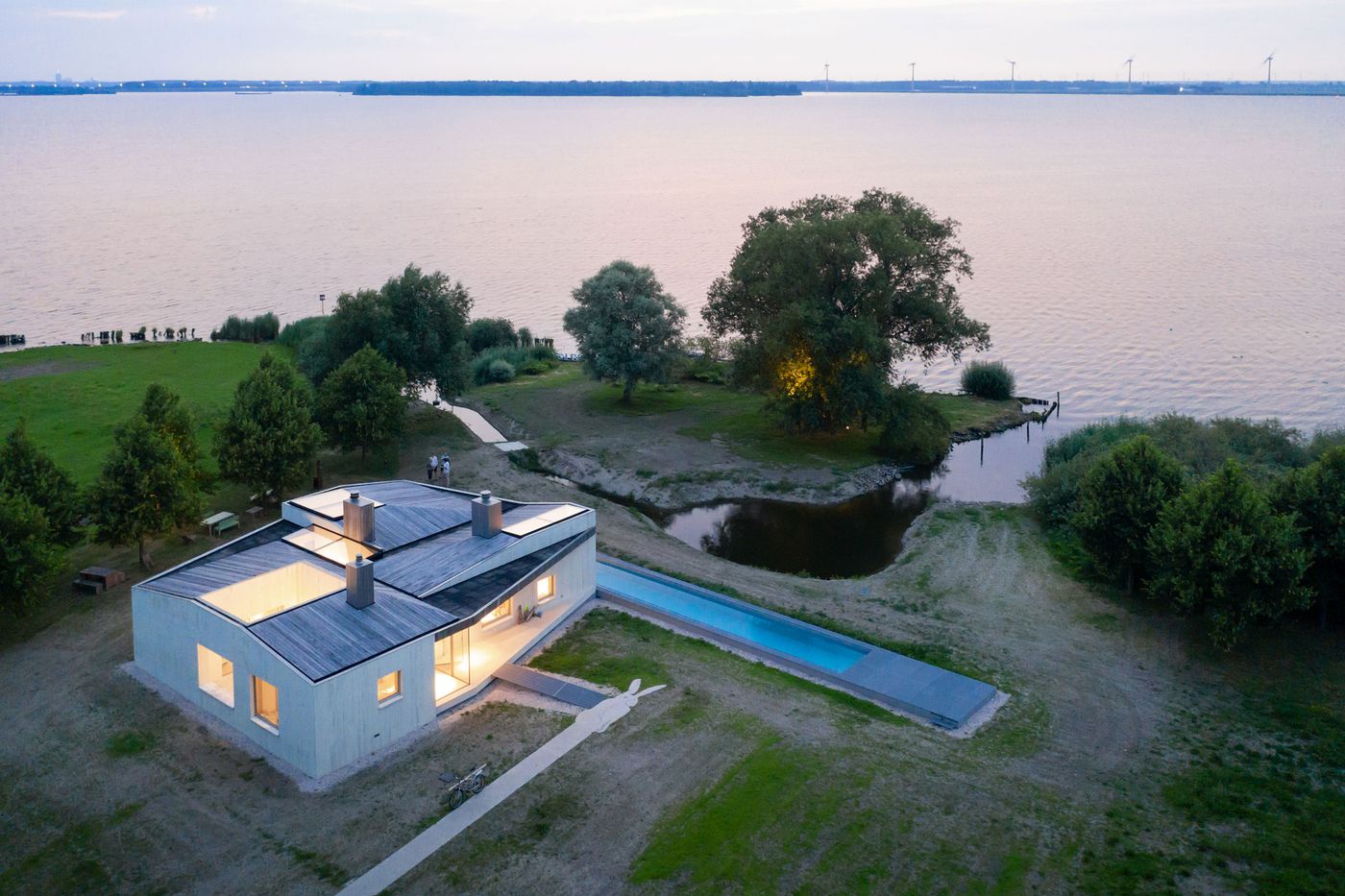
Photography by Iwan Baan.
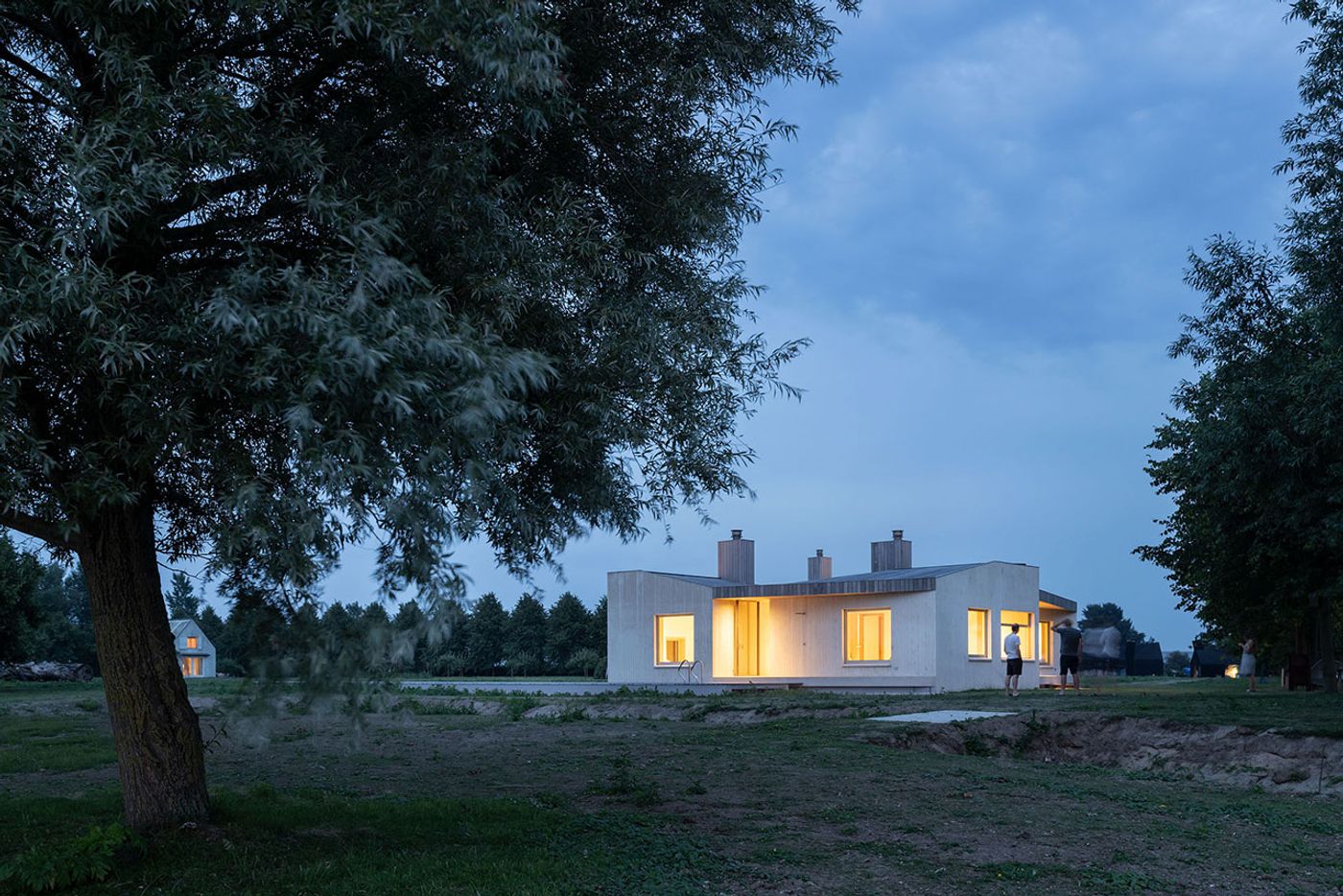
Photography by Iwan Baan.
